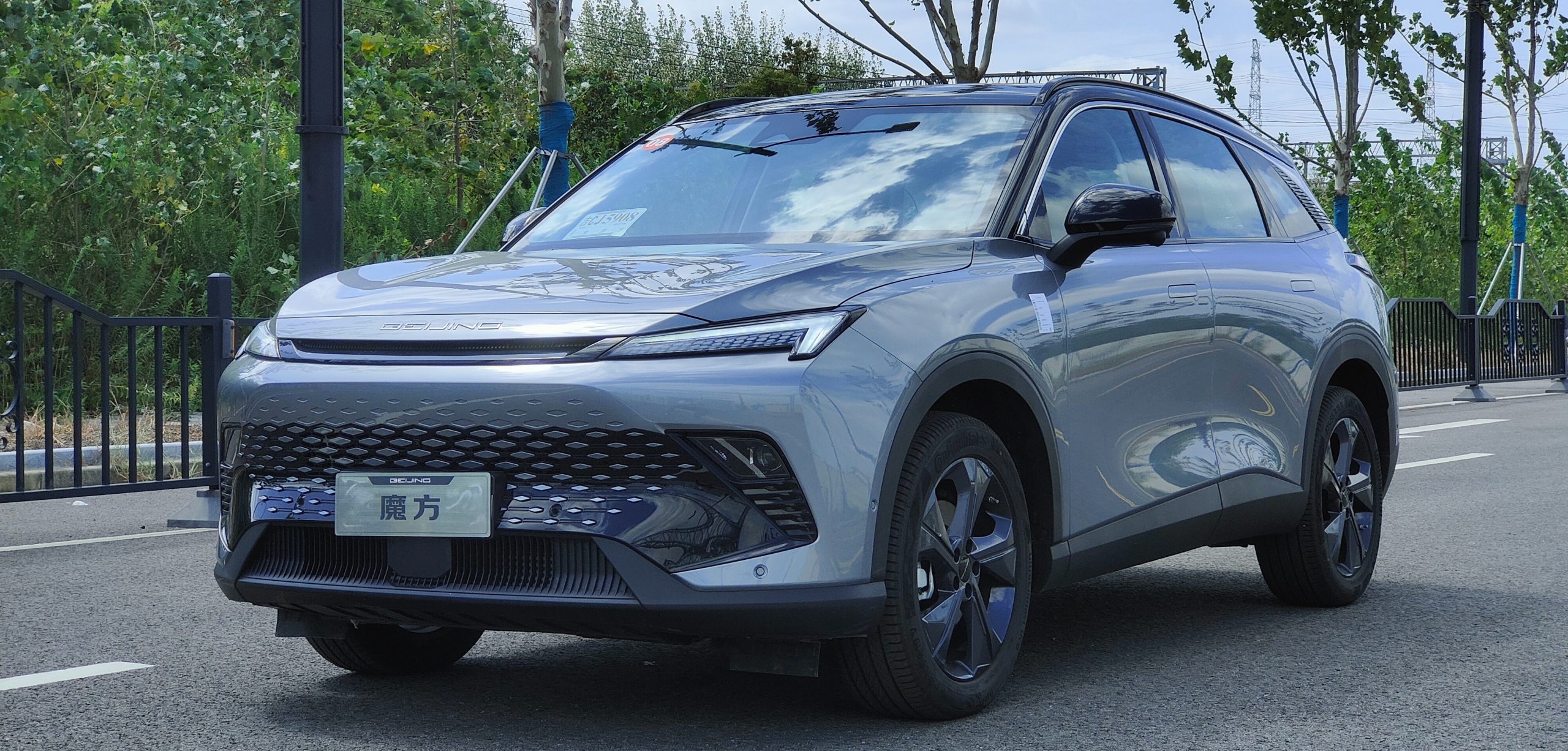On September 20th, I was invited to participate in the test drive event held by Beijing Automotive Group’s (BAIC) Magic Cube brand. Initially, I was not eager to attend because what’s so special about a petrol car priced between 99,900 to 153,900 RMB?
However, when I discovered that this car is actually equipped with Huawei’s HarmonyOS car system and powered by the Kirin 990A chip, which is the same as that used in the Huawei Mate series, my interest was immediately piqued. I decided to take a closer look at what features this HarmonyOS cockpit, priced below 120,000 RMB, could offer (the Silver and Gold editions do not come with the HarmonyOS car system).
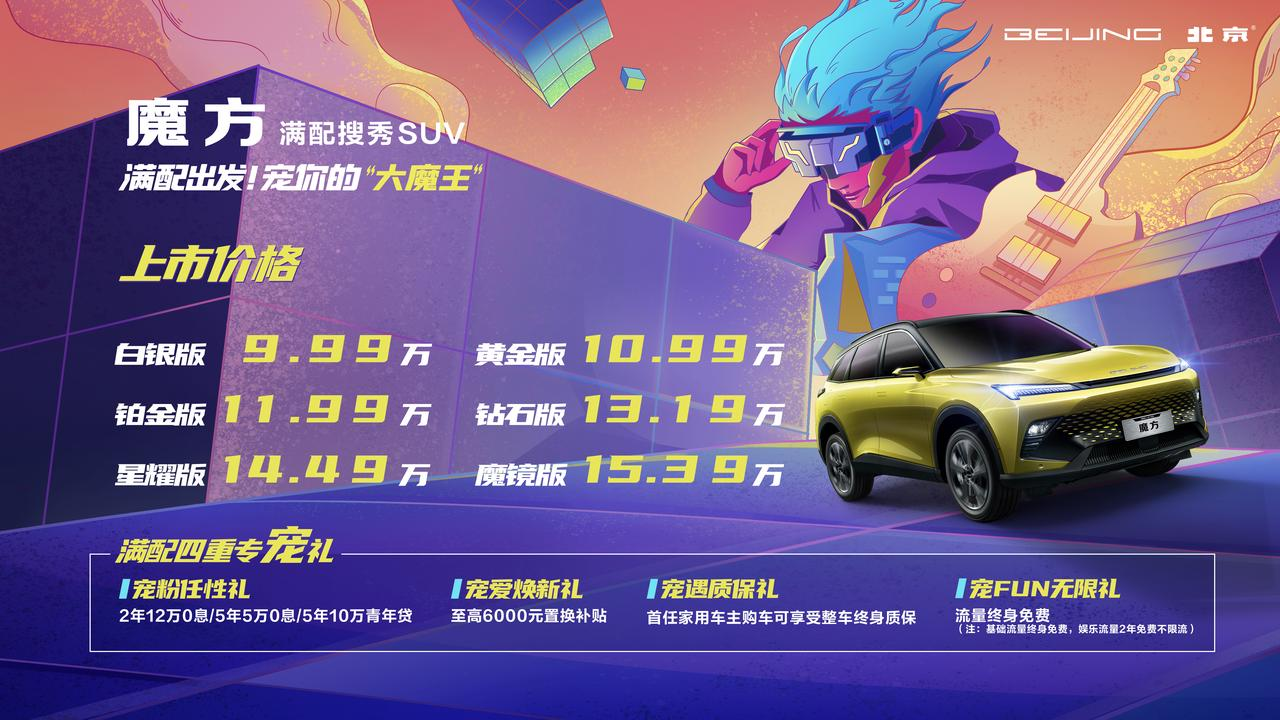
Introduction to the Intelligent Cockpit
Skipping over the regular introduction to the vehicle itself, let’s focus on the intelligent cockpit. The BAIC Magic Cube is equipped with the “HarmonyOS Intelligent Cockpit” and the Kirin 990A chip, which is the first time that HarmonyOS has appeared in a vehicle priced below 150,000 RMB. In addition, the Magic Cube supports various advanced driving assistance systems, AR-HUD, and over-the-air (OTA) updates for the five main areas of the car.
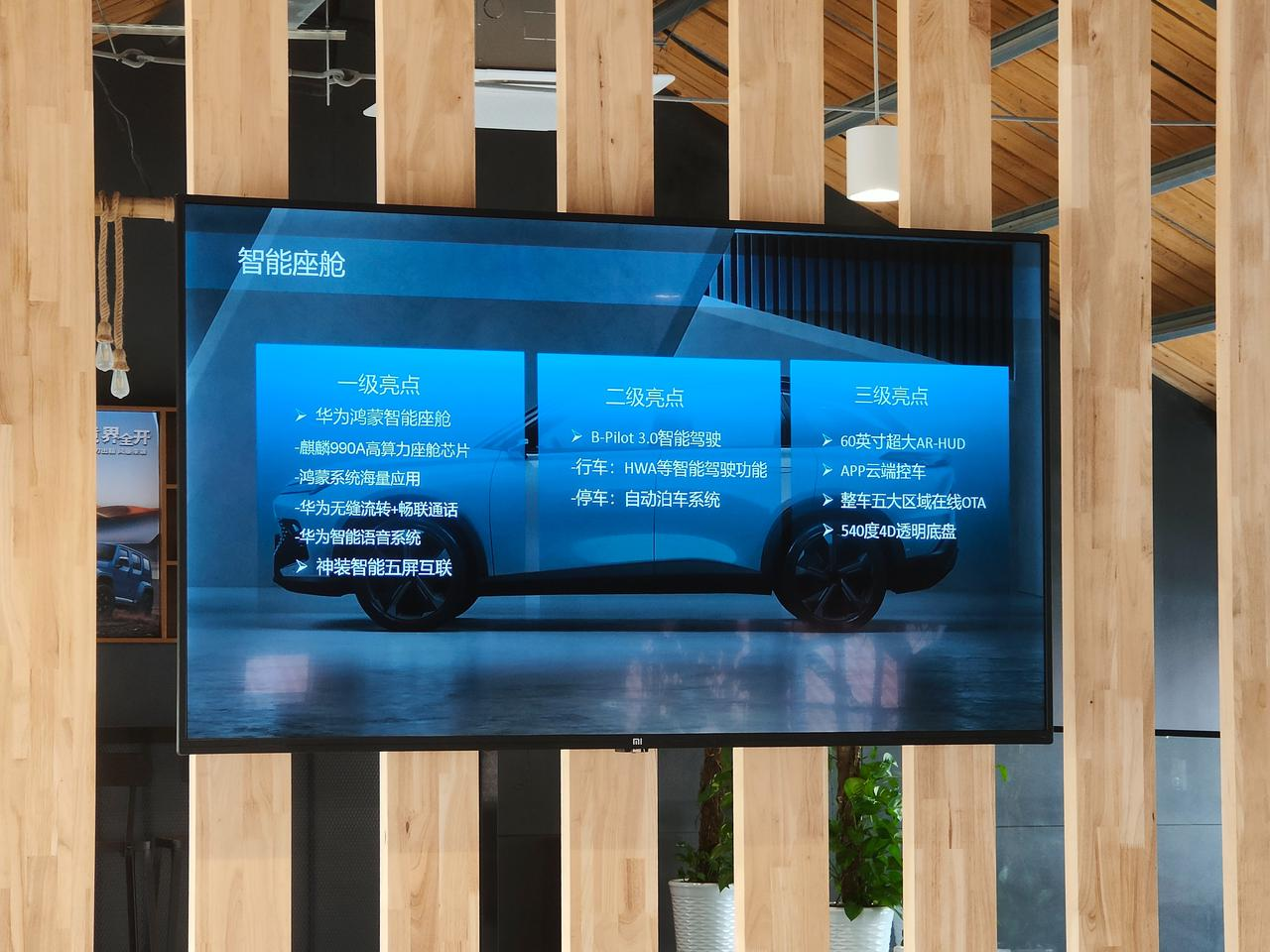
Since it is powered by HarmonyOS, it naturally supports a wide range of in-car applications, and the Magic Cube will continue to expand its in-car apps to over 100 different ones.
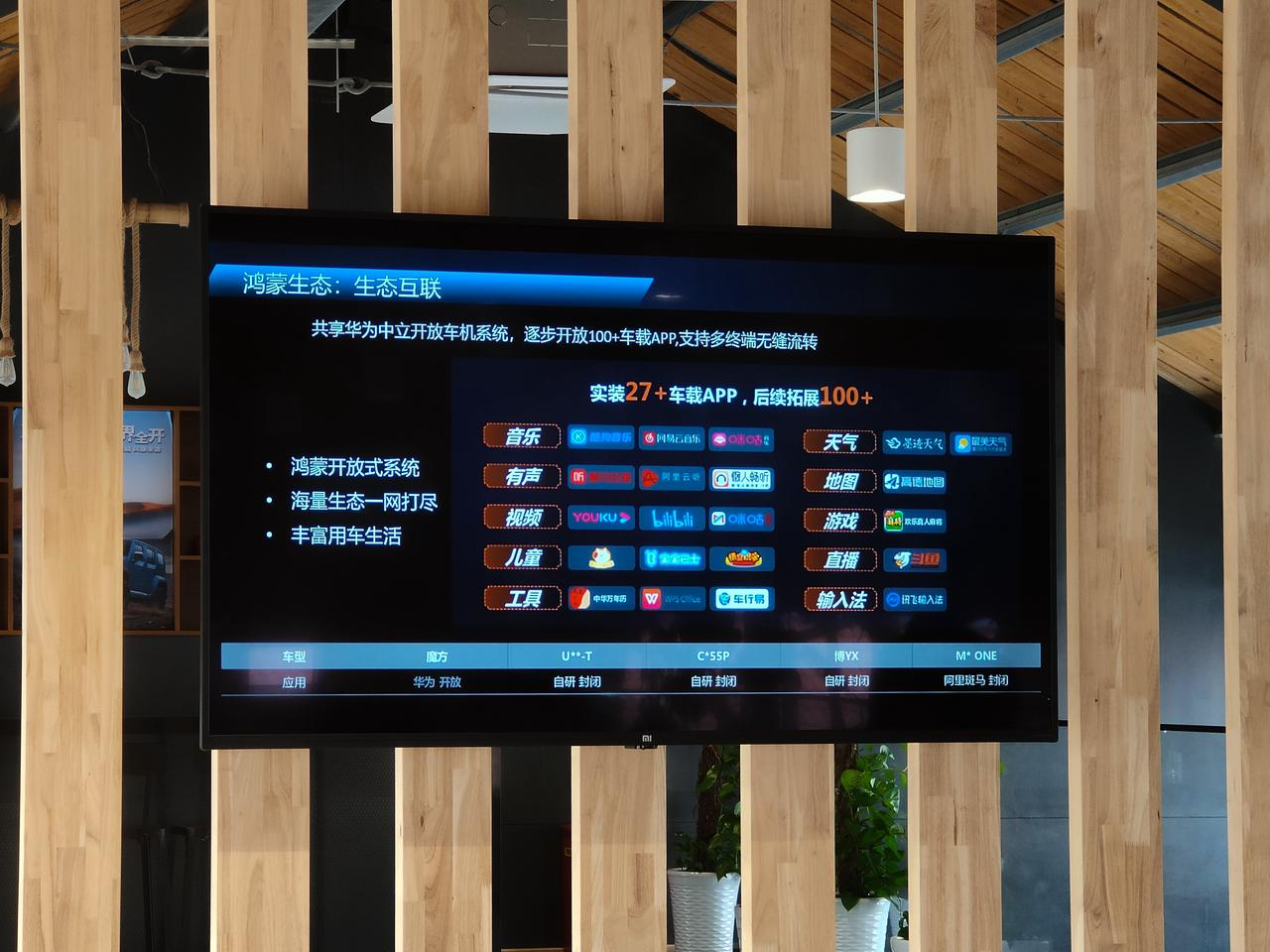
The next-generation Bosch advanced driver assistance system equipped in the Magic Cube includes 24 driving assistance features, which is considered quite impressive in the same class of petrol vehicles.
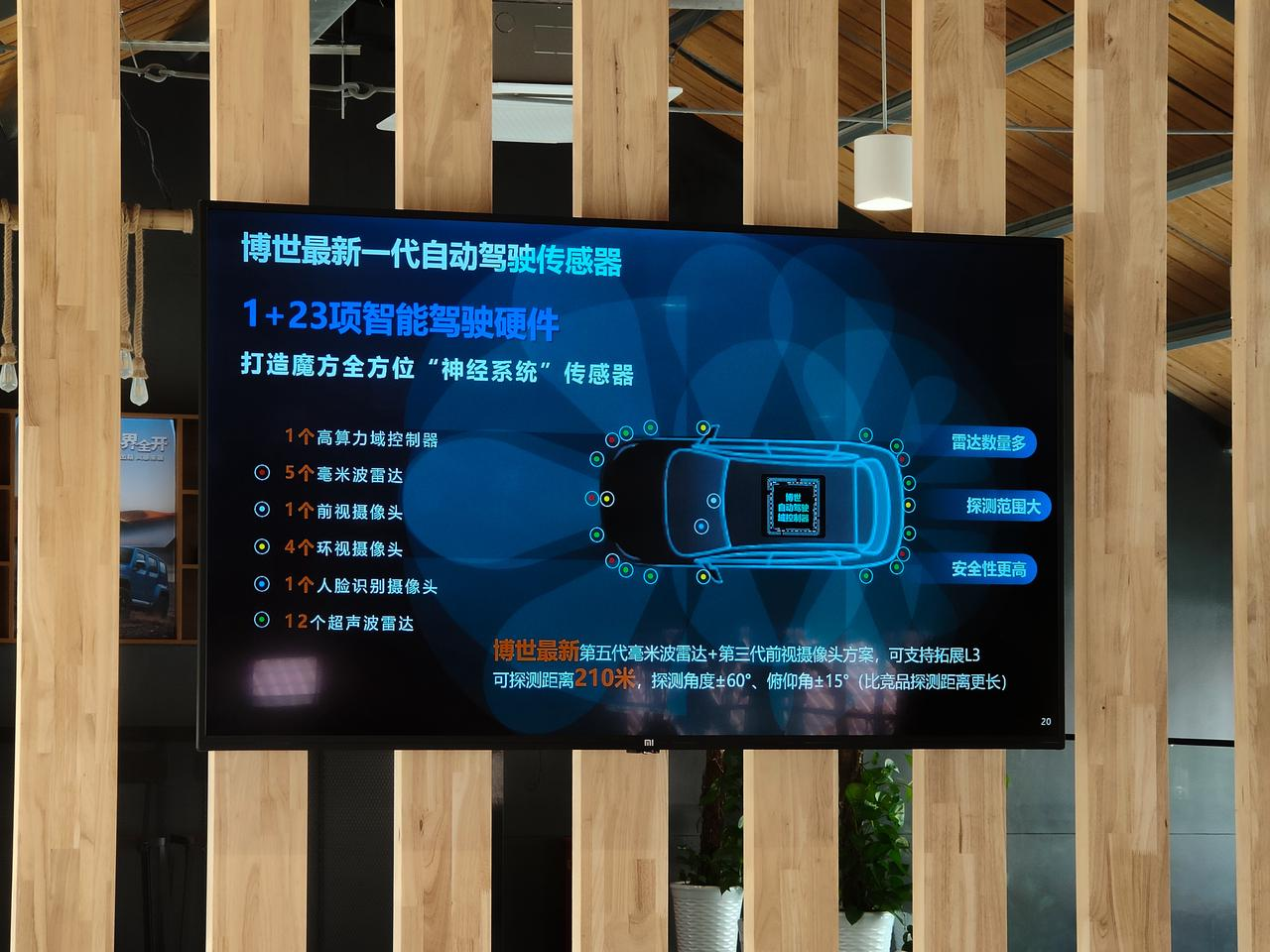
The Magic Cube also supports a lane-change signal lamp flashing function, which can be used when driving at 60-130 km/h, but this feature is only available on the Star version.
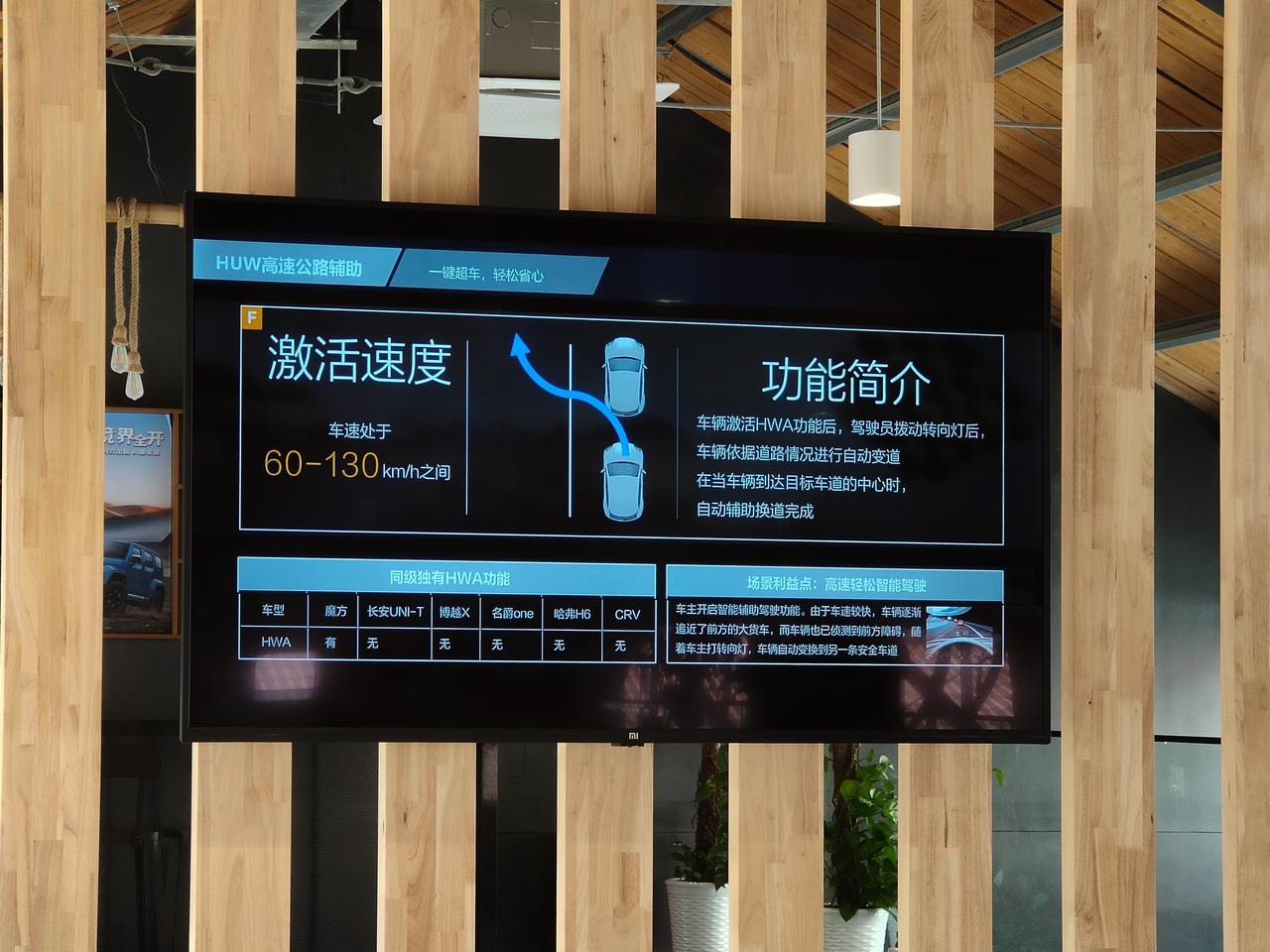
The Magic Cube supports two types of auto parking, one for inside and one for outside the car, and supports automatic parking in various commonly seen parking spots. In addition, it also supports advanced level automated parking, but again, these features are only available on the Star version.
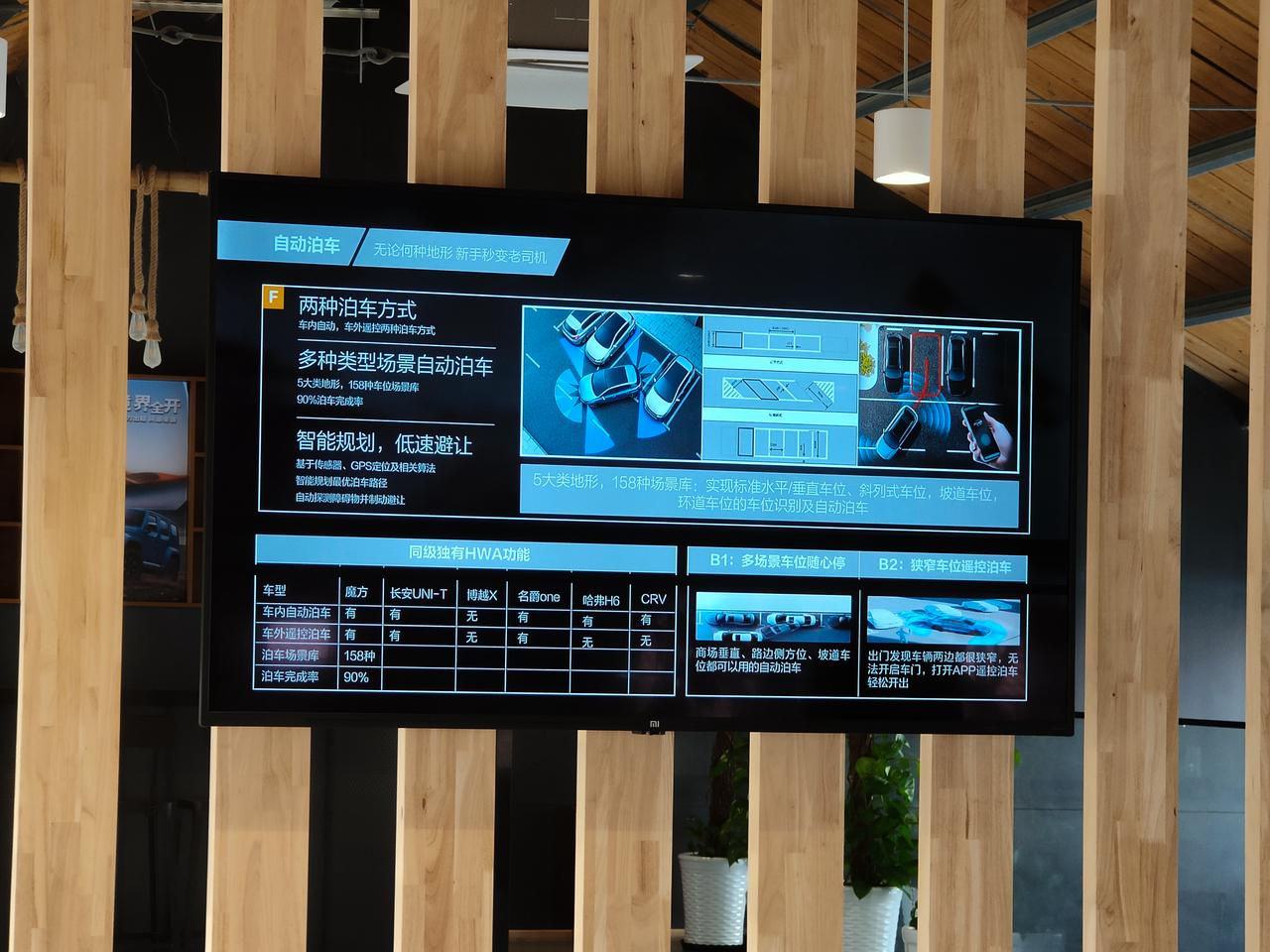
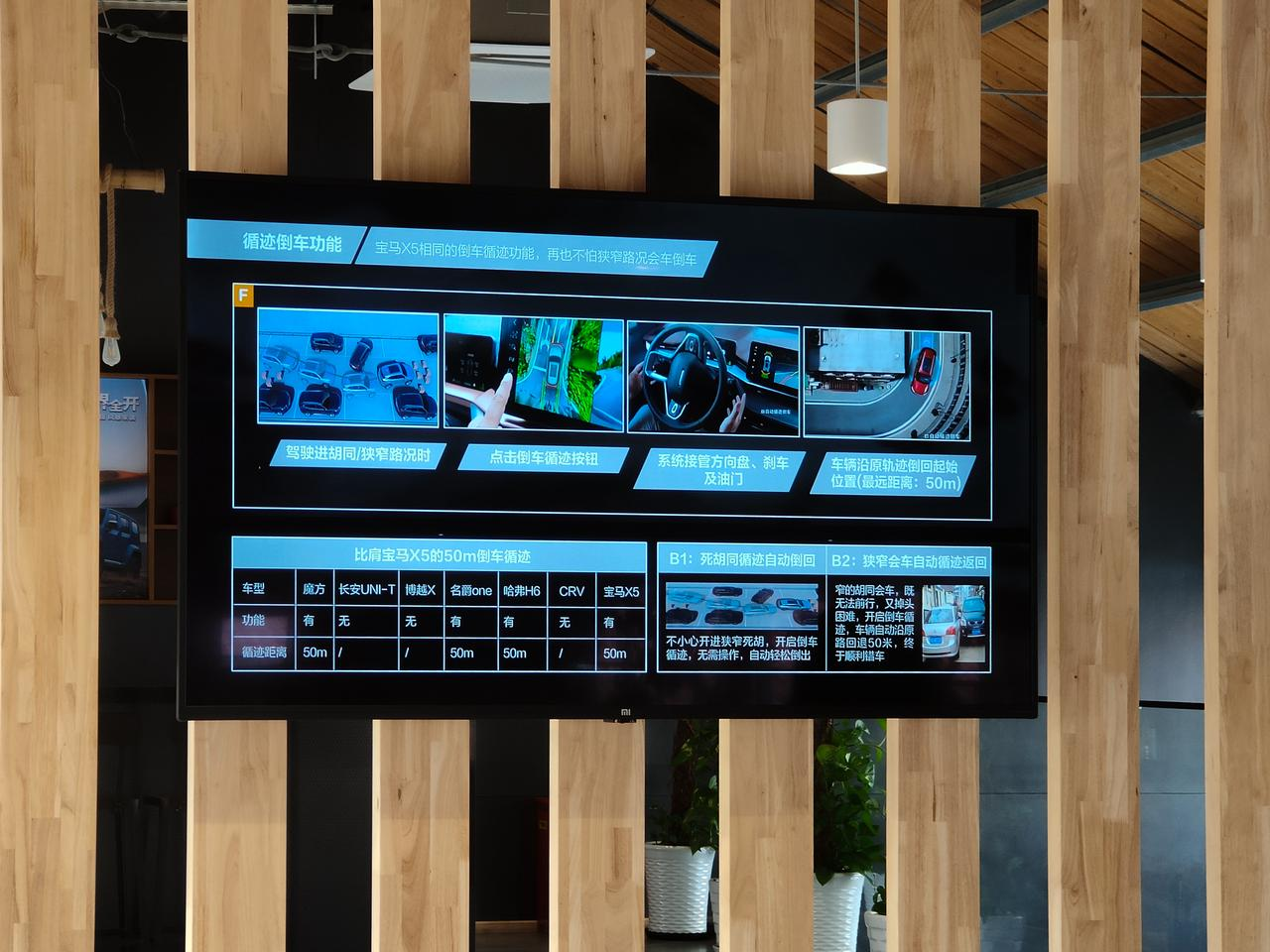 From Diamond Edition, AR-HUD function is standard, which can not only display speed and navigation information, but also show vehicle perception information in assisted driving mode, and even project a 60-inch screen to play videos.
From Diamond Edition, AR-HUD function is standard, which can not only display speed and navigation information, but also show vehicle perception information in assisted driving mode, and even project a 60-inch screen to play videos.
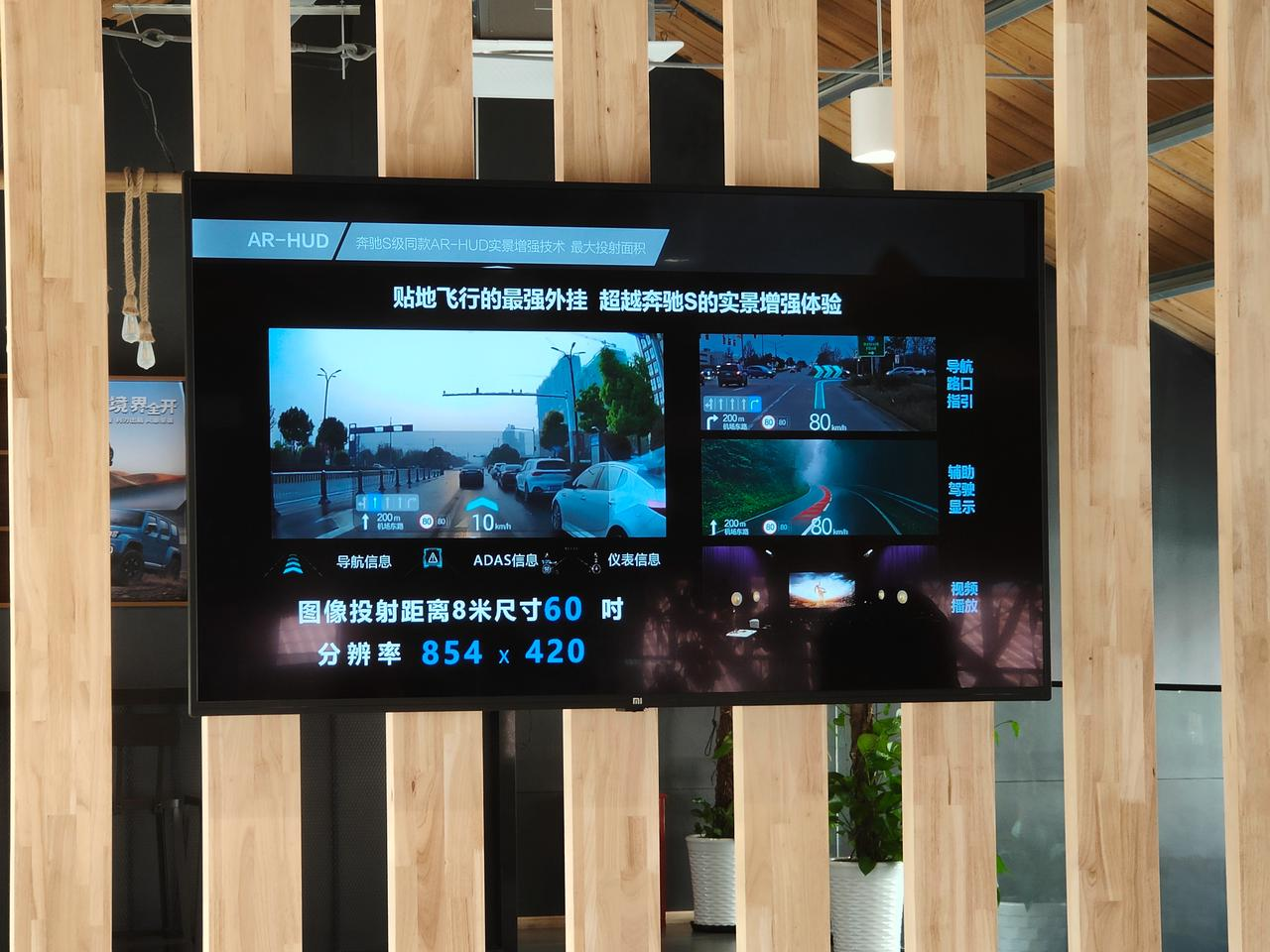
These are the intelligent parts. Next, let’s take a ride and experience what the entry-level Hongmeng Cabin looks like.
What is the Hongmeng Cabin for less than 120,000 RMB like?
The car I received today is the top-of-the-line Star Edition, but the Hongmeng Cabin has been standard starting from the Platinum Edition. Therefore, the following experience is basically equivalent to the performance of the Platinum Edition and above. Due to legal reasons, the Magic Mirror Edition cannot be launched since it uses streaming media rearview mirrors.
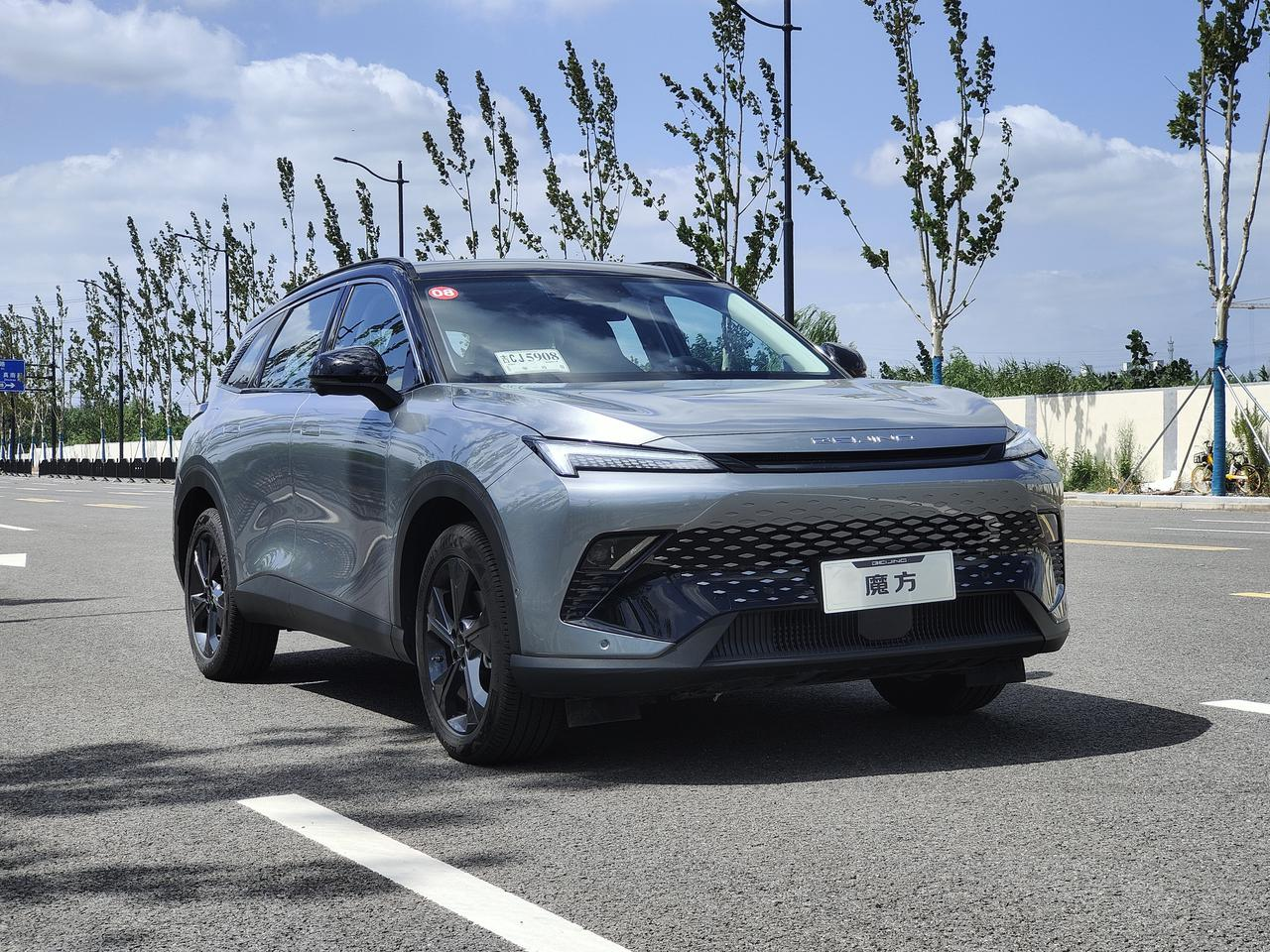
Starting with the instrument panel, there are a total of three display themes. Which display theme do you like? Personally, I still prefer the traditional display method that is close to traditional fuel vehicles.
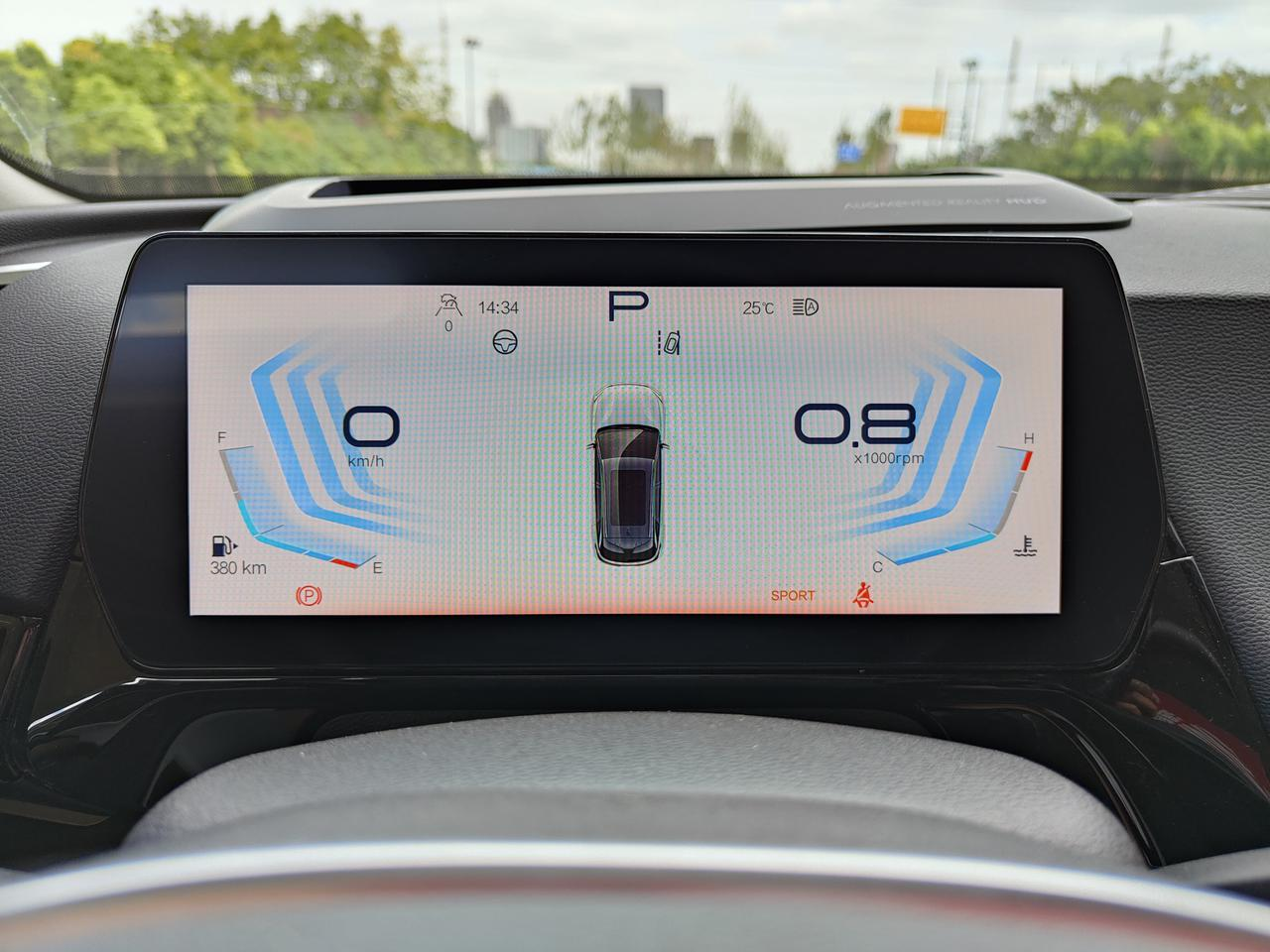
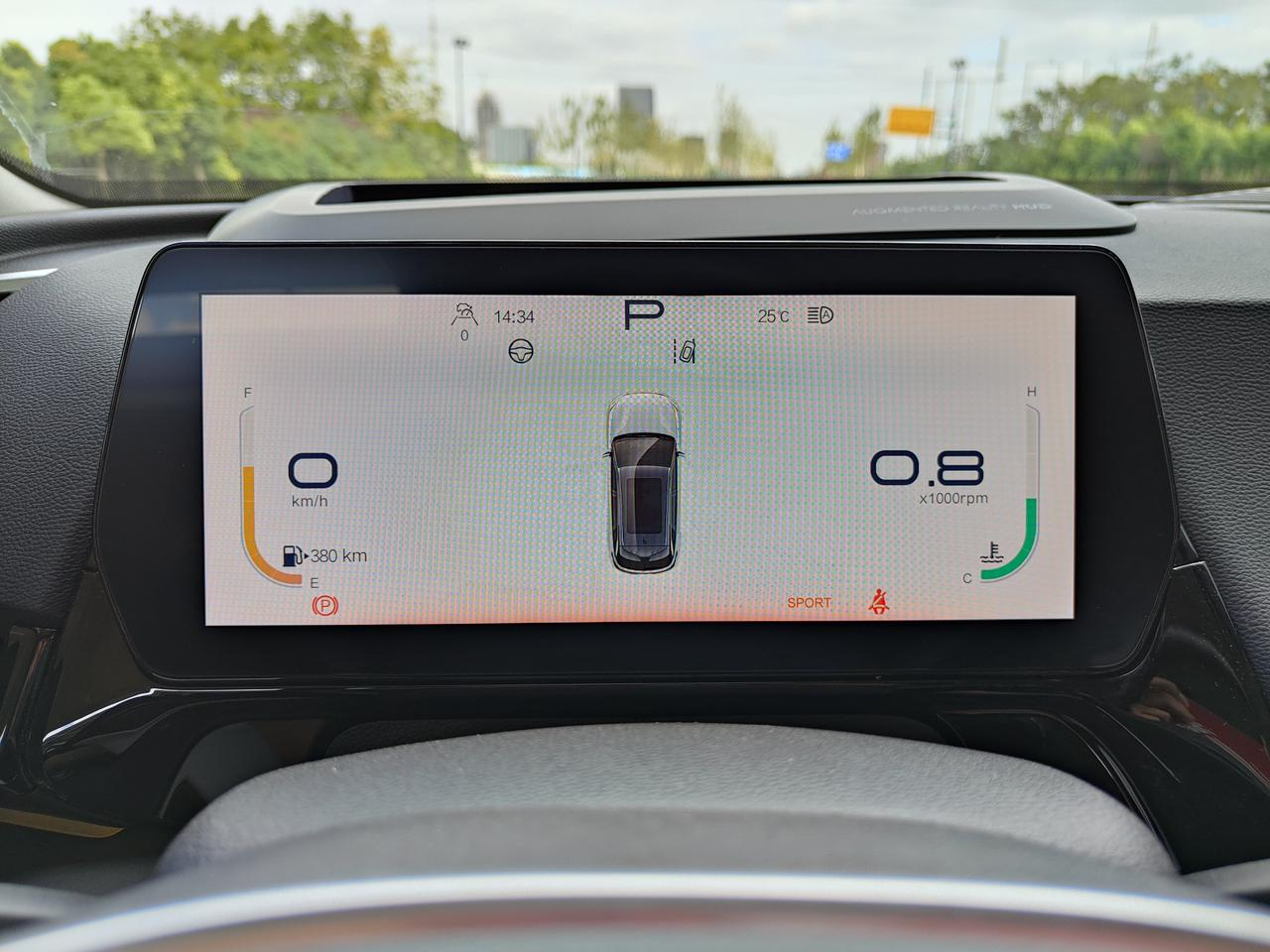
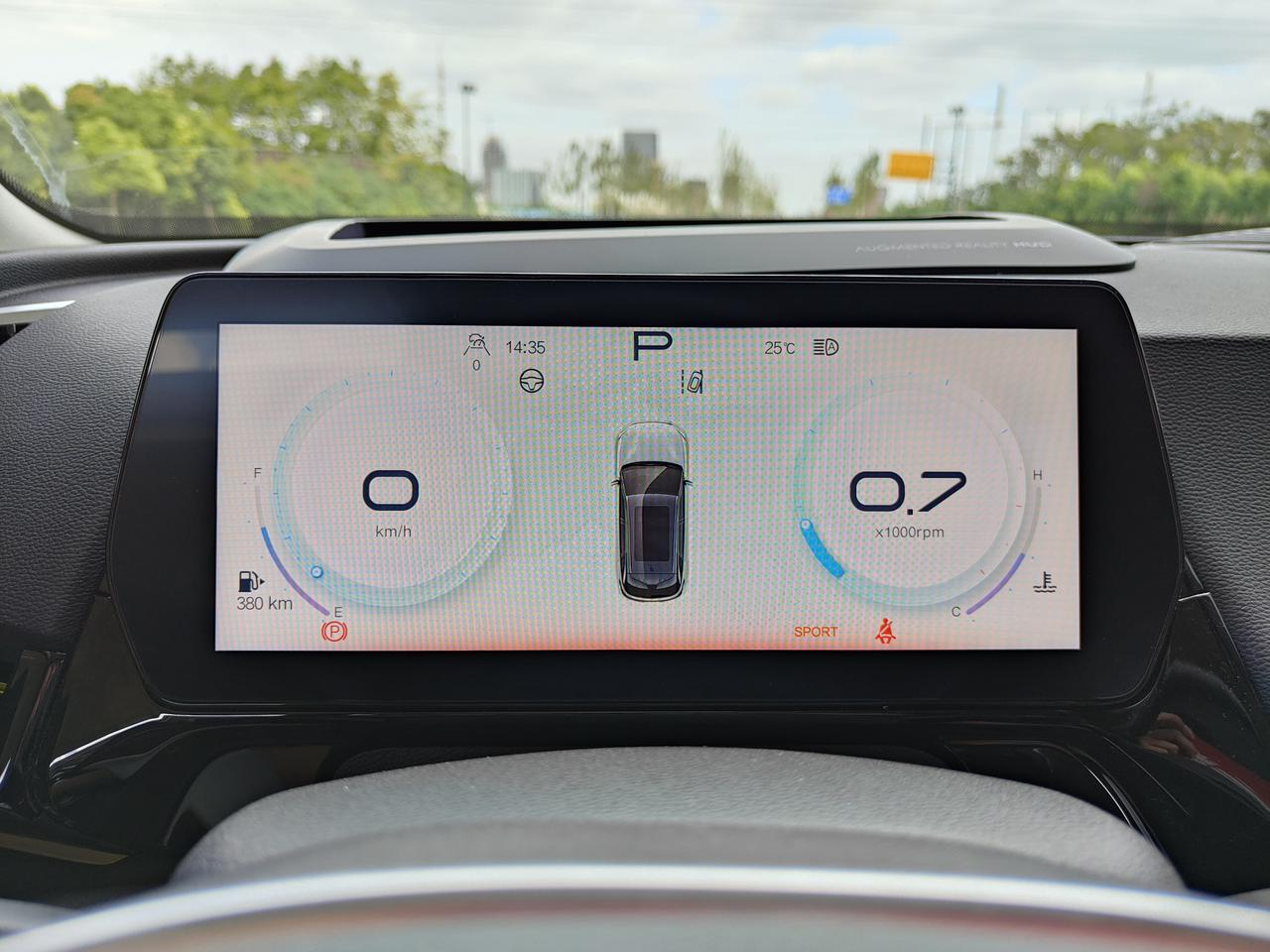
The main interface of the center console is composed of the following parts:
- 1 big and 4 small quick card in the home page
- Top status bar
- Left dock bar
- Bottom dock bar
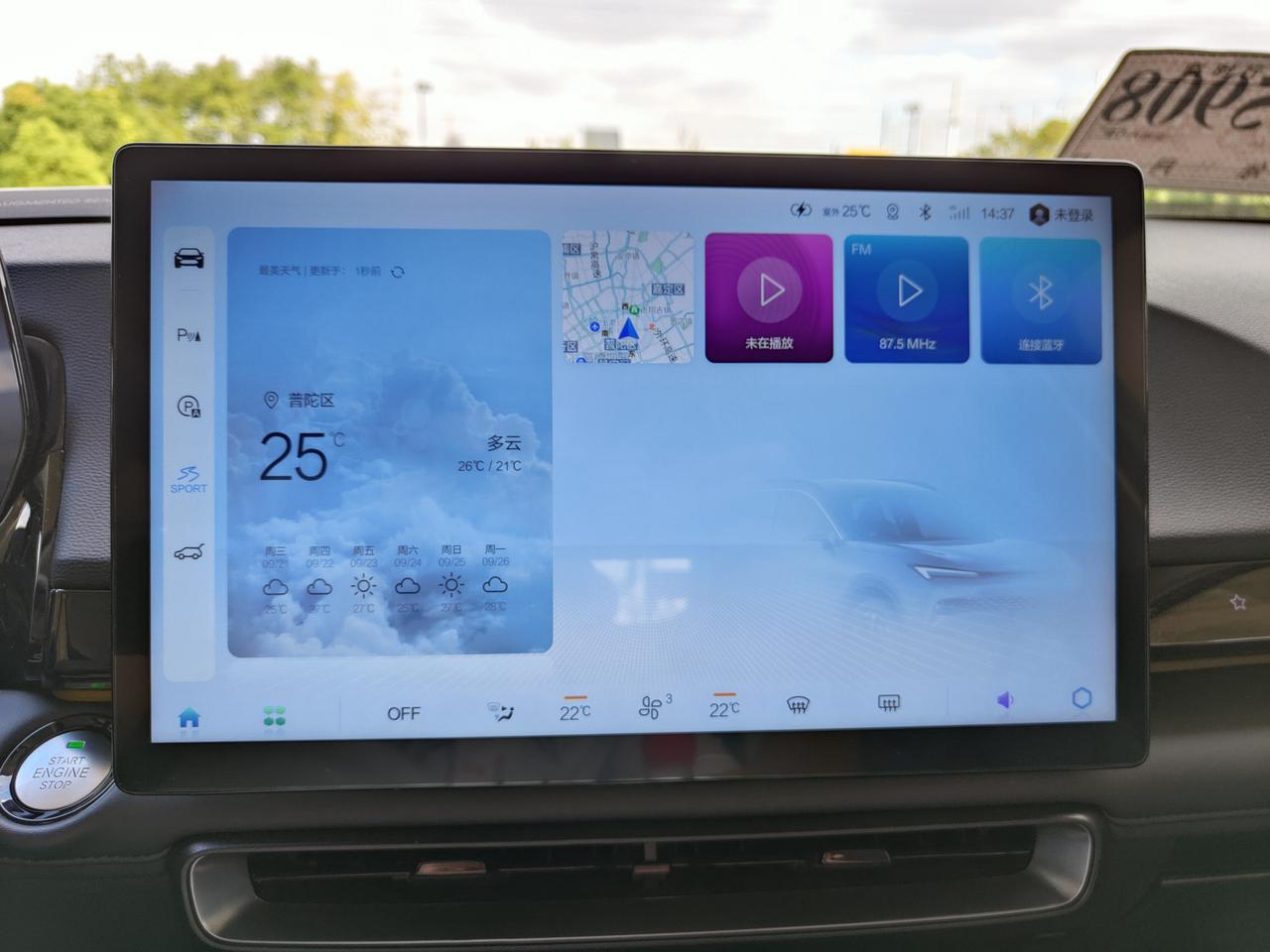
The 5 quick cards can be freely dragged and arranged, but there can only be 1 big quick card. I arranged it according to my own habits as follows.
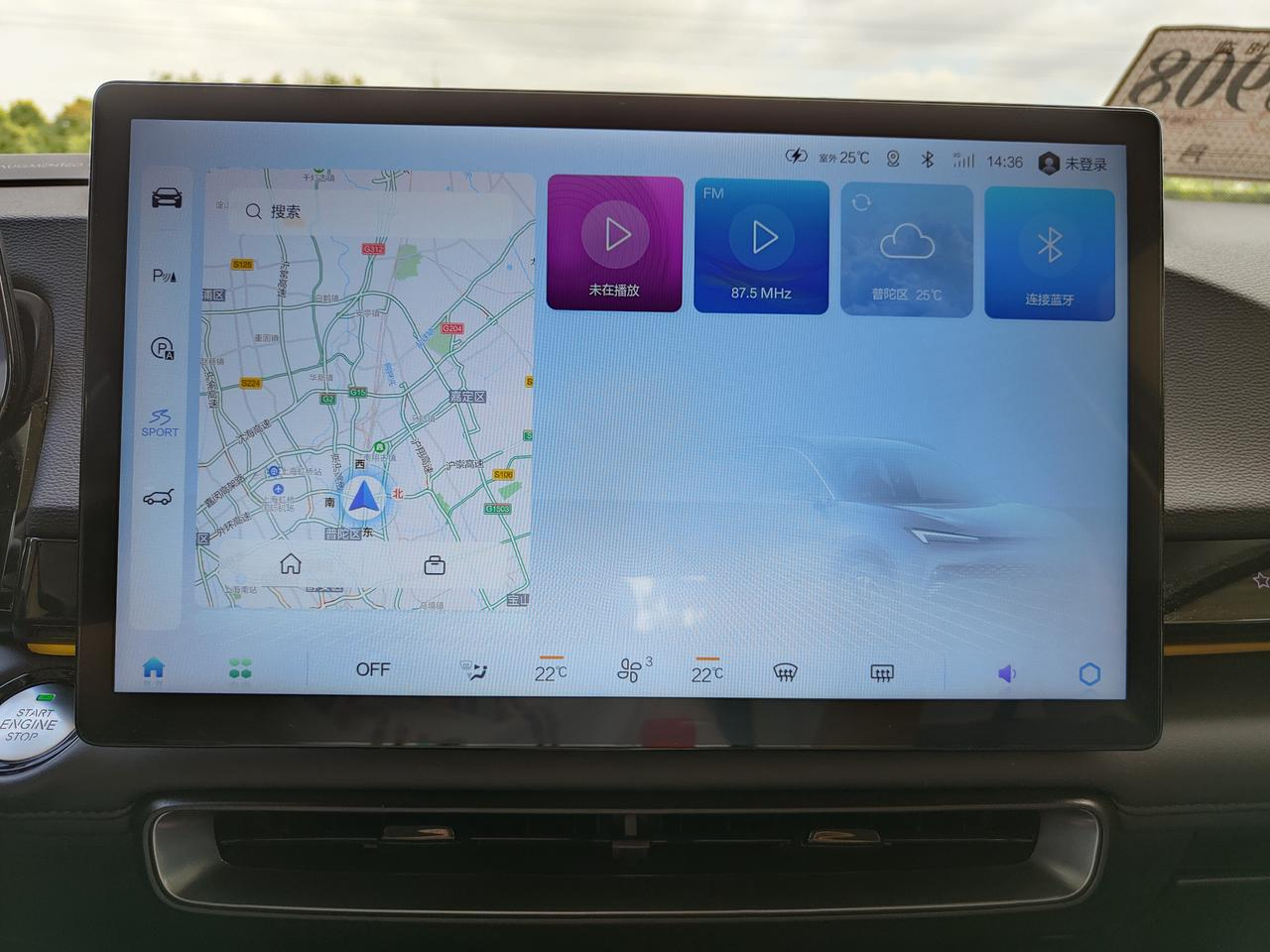
Swiping down from the top status bar can bring up various commonly used quick menus, such as seat habits, brightness and volume adjustment, and mode switching, which are relatively commonly used functions.
 When switching to the night mode, both the central control and gauge will switch to a black background color.
When switching to the night mode, both the central control and gauge will switch to a black background color.
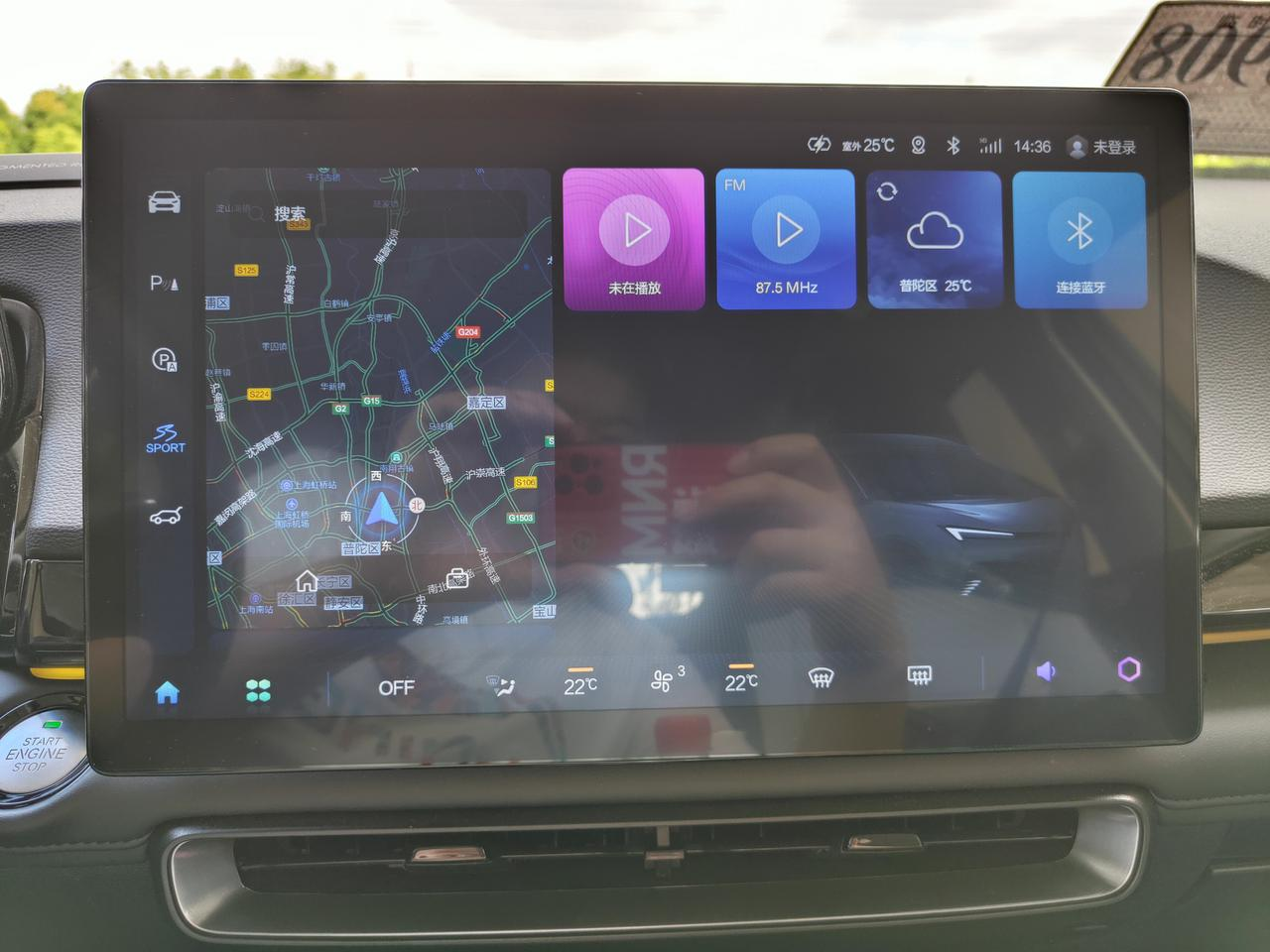
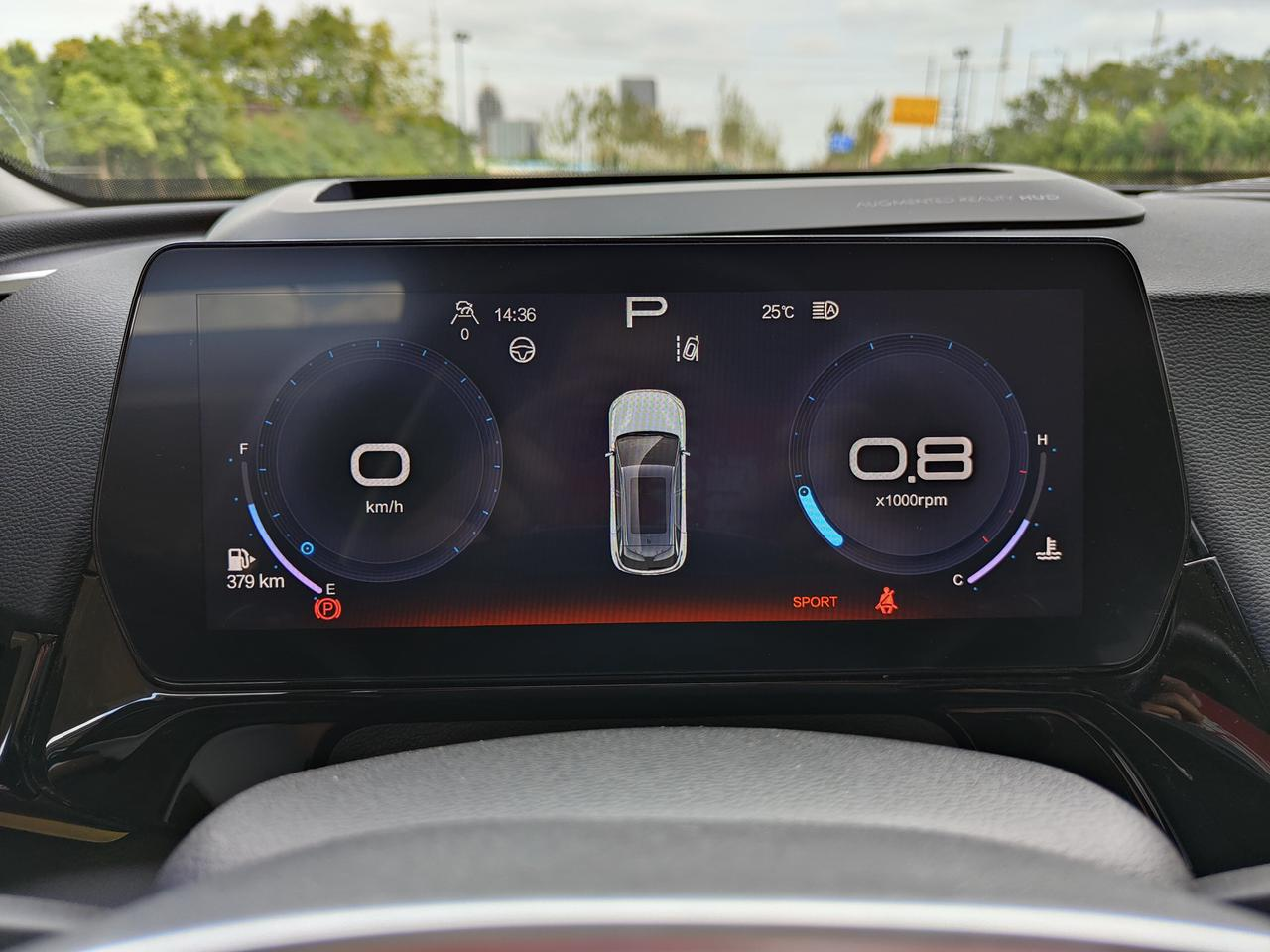
In the vehicle design interface, do you feel a new sense of power? In the common settings, various driving modes can be switched, and as the driving mode is switched, the color around the vehicle model will also change.
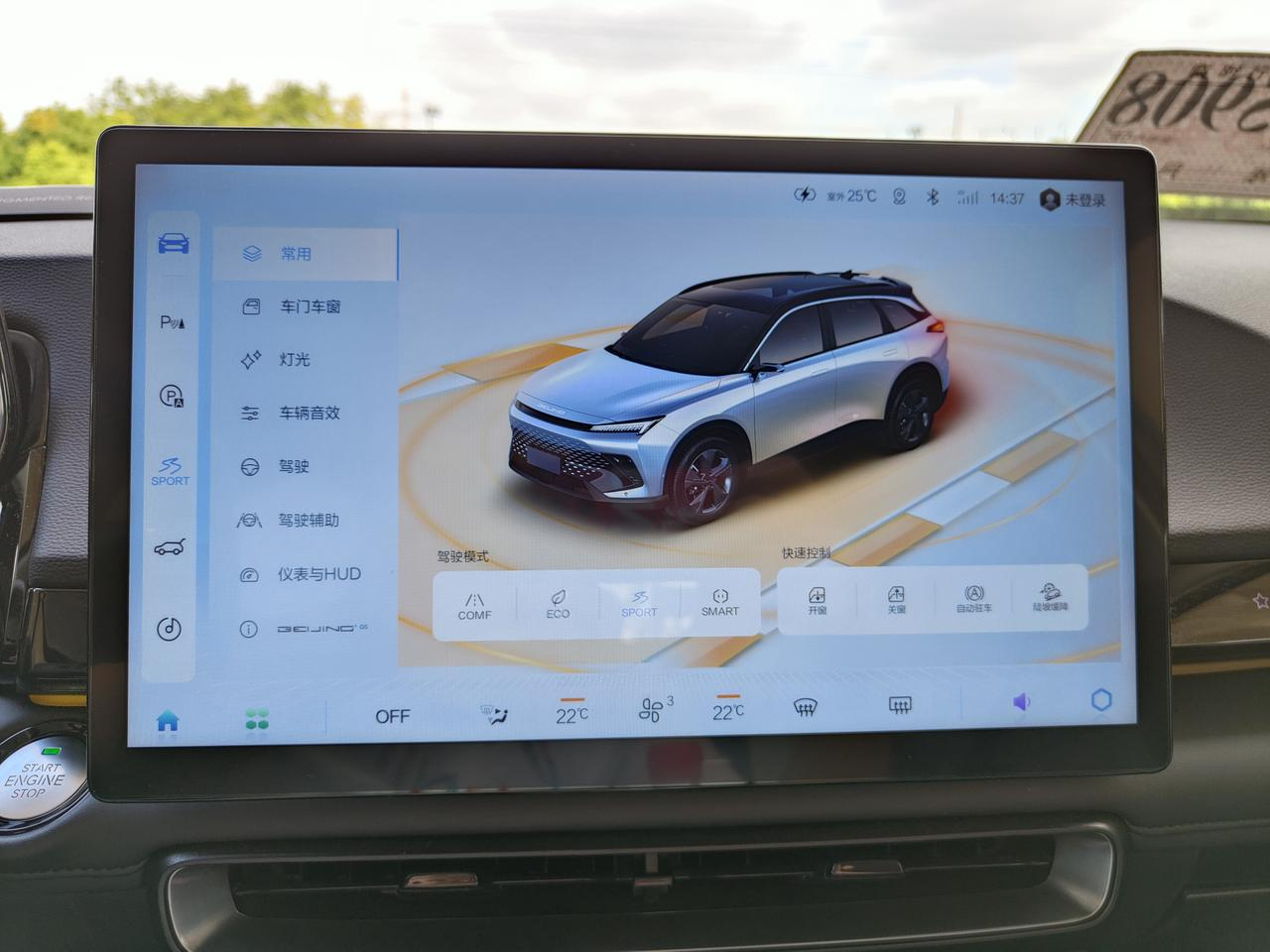
The smart mode means that the vehicle will automatically match the corresponding feedback intensity based on the driver’s accelerator and brake pedal force. After using it, I found that switching to the sport mode is more in line with my driving habits.
The quick controls include window switches, automatic parking switches, and steep hill descent switches. Unfortunately, the window switch function can only switch all windows simultaneously and cannot control a single window separately.
Clicking on the vehicle model can enter the “wordless mode”, at which time the vehicle model can be rotated 360 degrees. After trying it for a while, the animation smoothness is very good, thanks to the Kirin 990A chip.
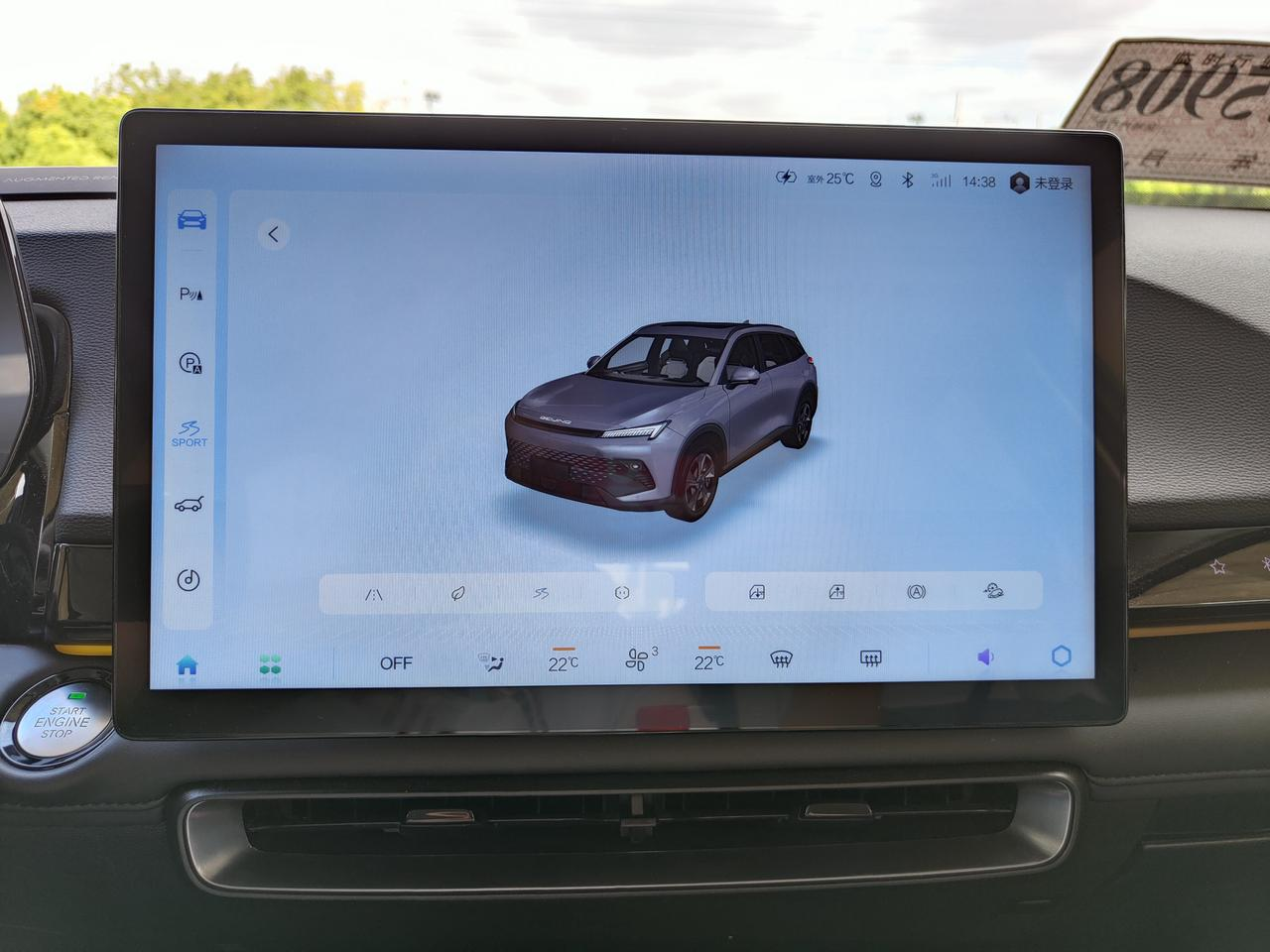
Entering the door control menu, the automatic lock can be set to four speeds between 5-20 km/h, and this shows that the customization degree of the HarmonyOS system is higher than that of many other car systems. In addition, it is also possible to set the driver’s door to unlock only or to unlock all four doors when turning off the engine.

The window setting not only has automatic window closing for various scenarios, but also supports remote control of the window lifting and lowering by mobile phone.
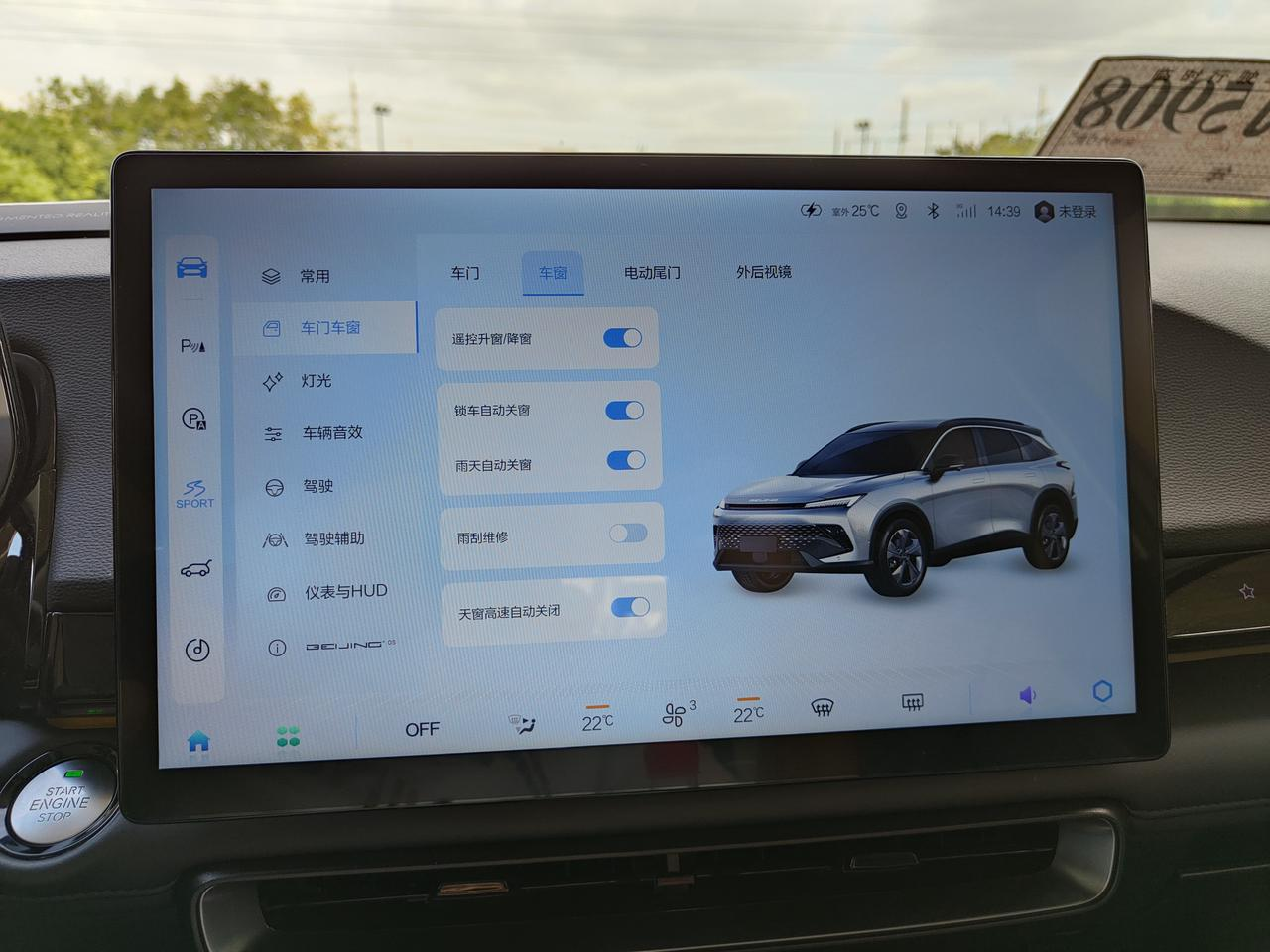
The electric tailgate has a switch function, supports opening height from 50-100%, and supports memory for two heights. It is suitable for family members with different heights to use the car, and the electric tailgate switch also supports light warning and alarm sound.
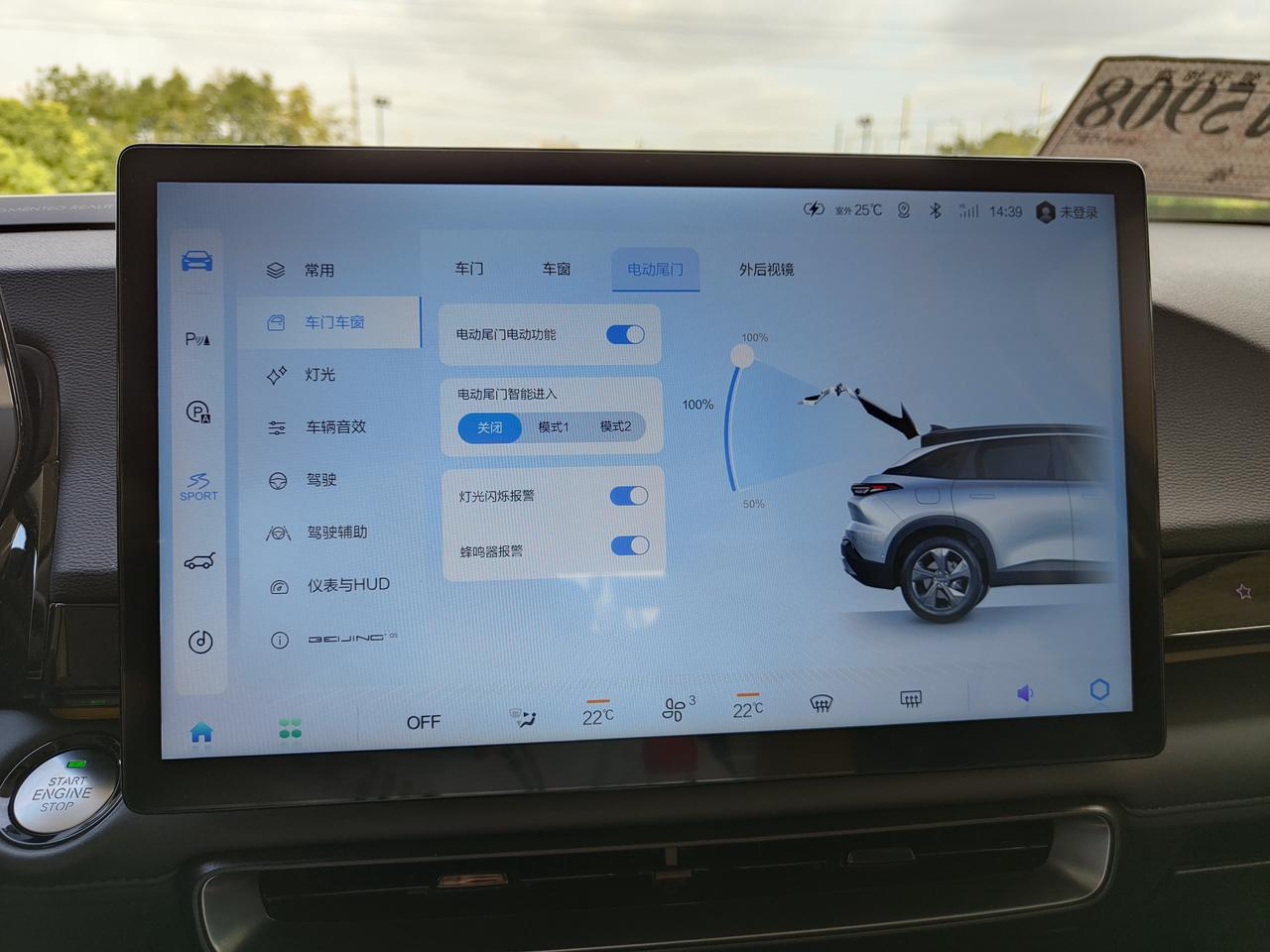 In the light menu, the car supports setting the “Follow Me Home” function for up to 120 seconds, which is particularly useful when parked in poor lighting at night. The turn signal supports flashing 3, 5, and 7 times, while most cars only default to flashing 3 times. Based on my habits, I prefer to set it to 5 times.
In the light menu, the car supports setting the “Follow Me Home” function for up to 120 seconds, which is particularly useful when parked in poor lighting at night. The turn signal supports flashing 3, 5, and 7 times, while most cars only default to flashing 3 times. Based on my habits, I prefer to set it to 5 times.
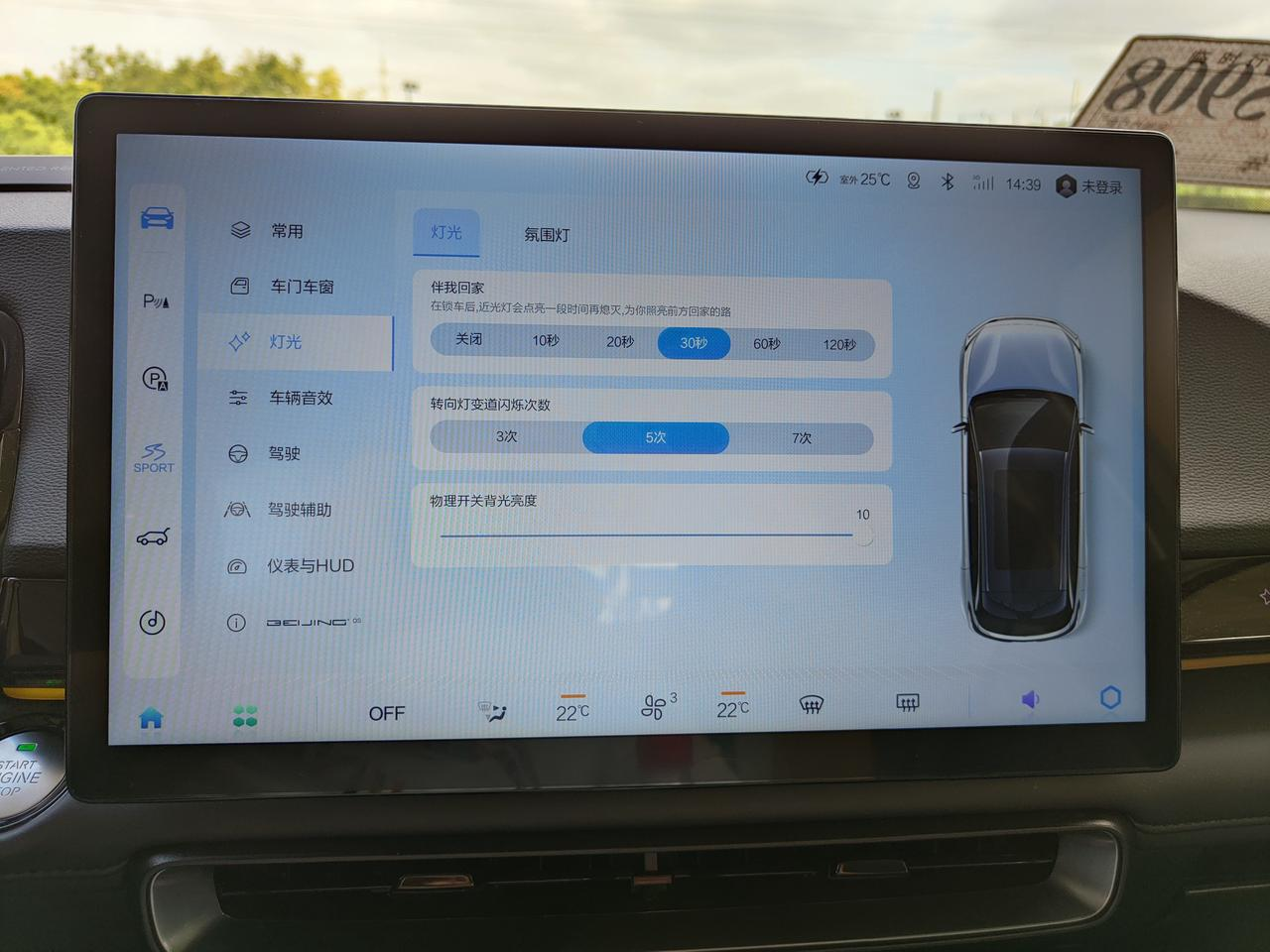
The ambient lighting supports 7 modes that can be switched arbitrarily, but unfortunately, only one color can be used at a time.
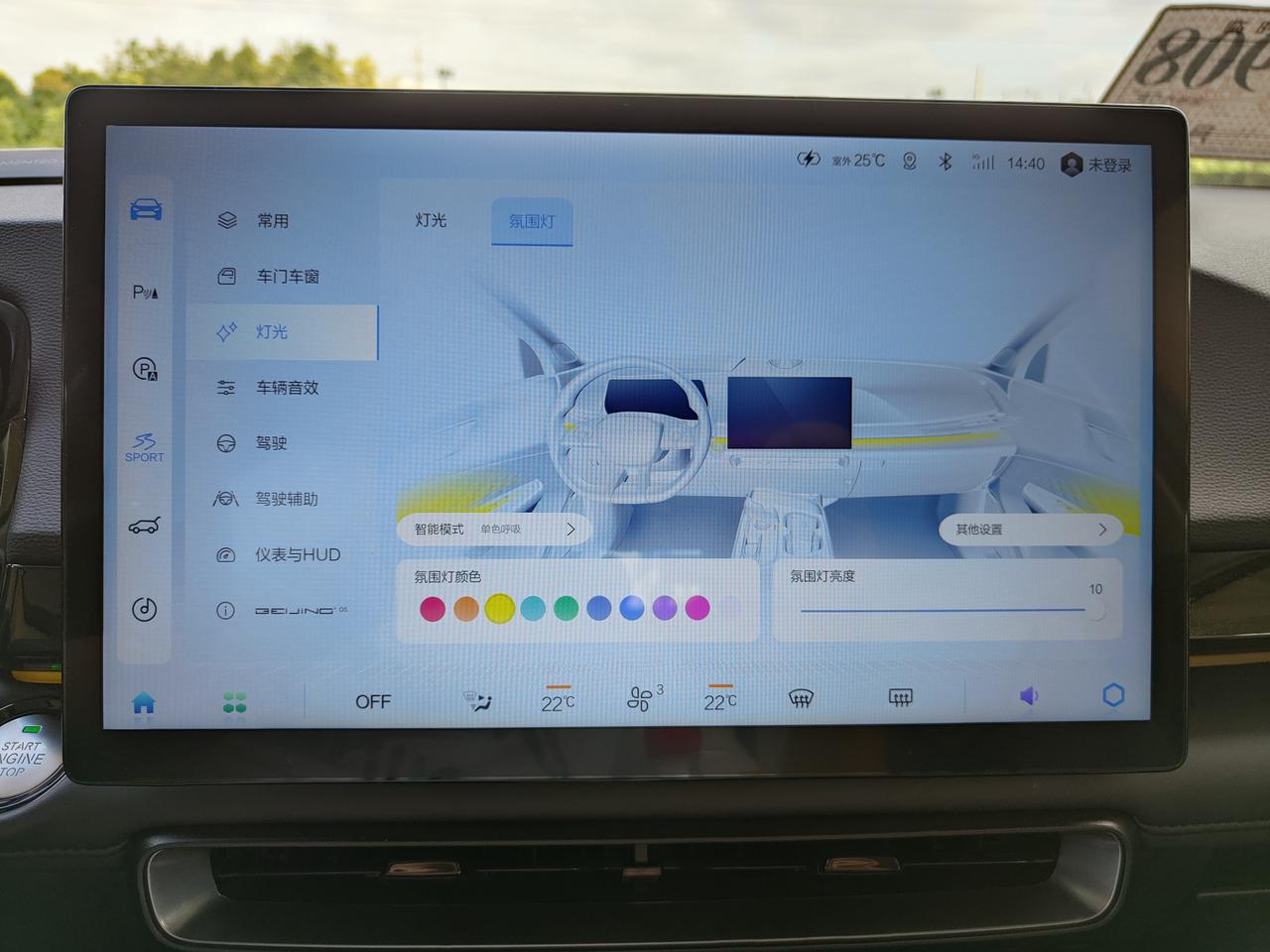
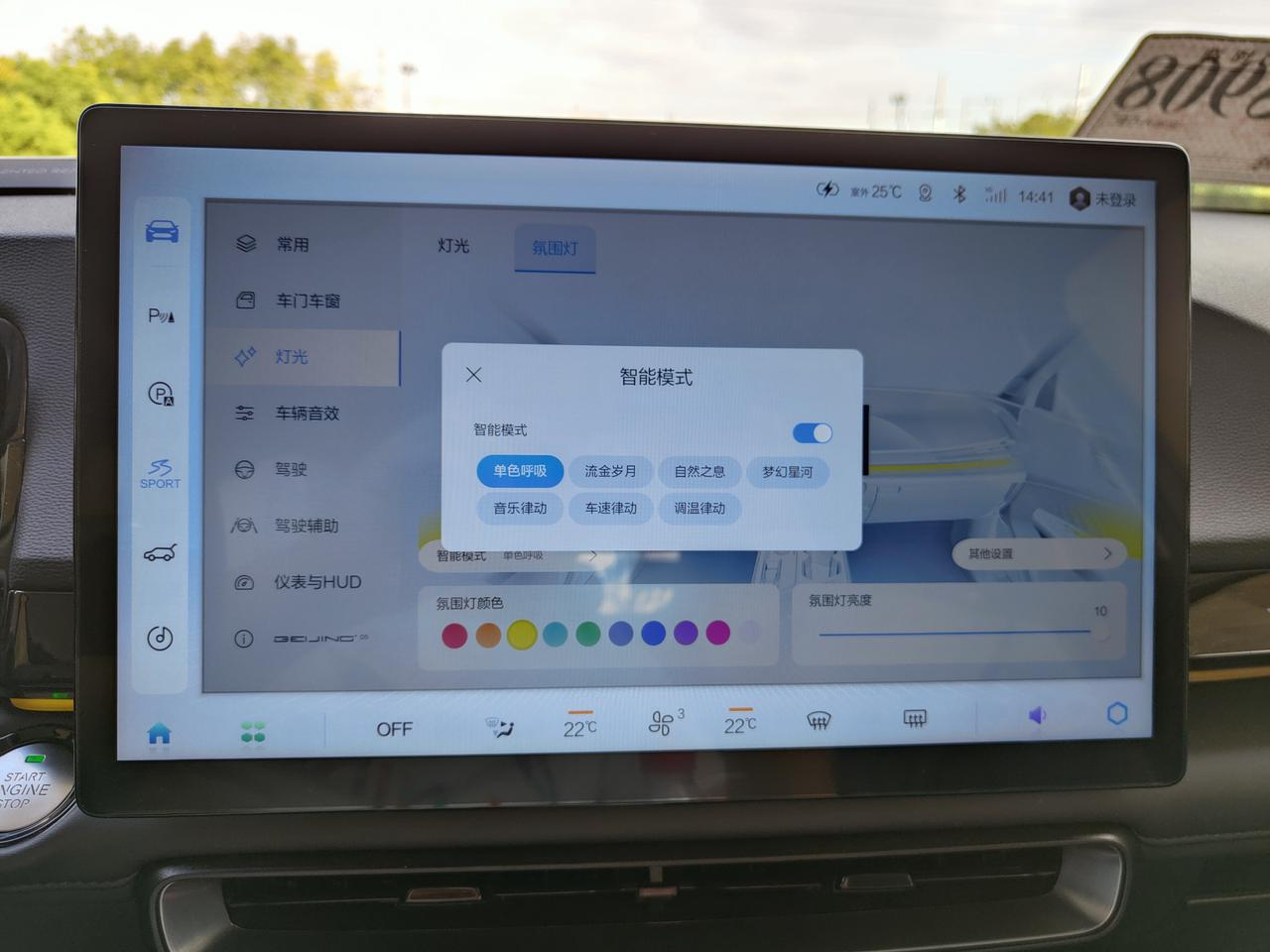
There are also several practical options in the other settings.
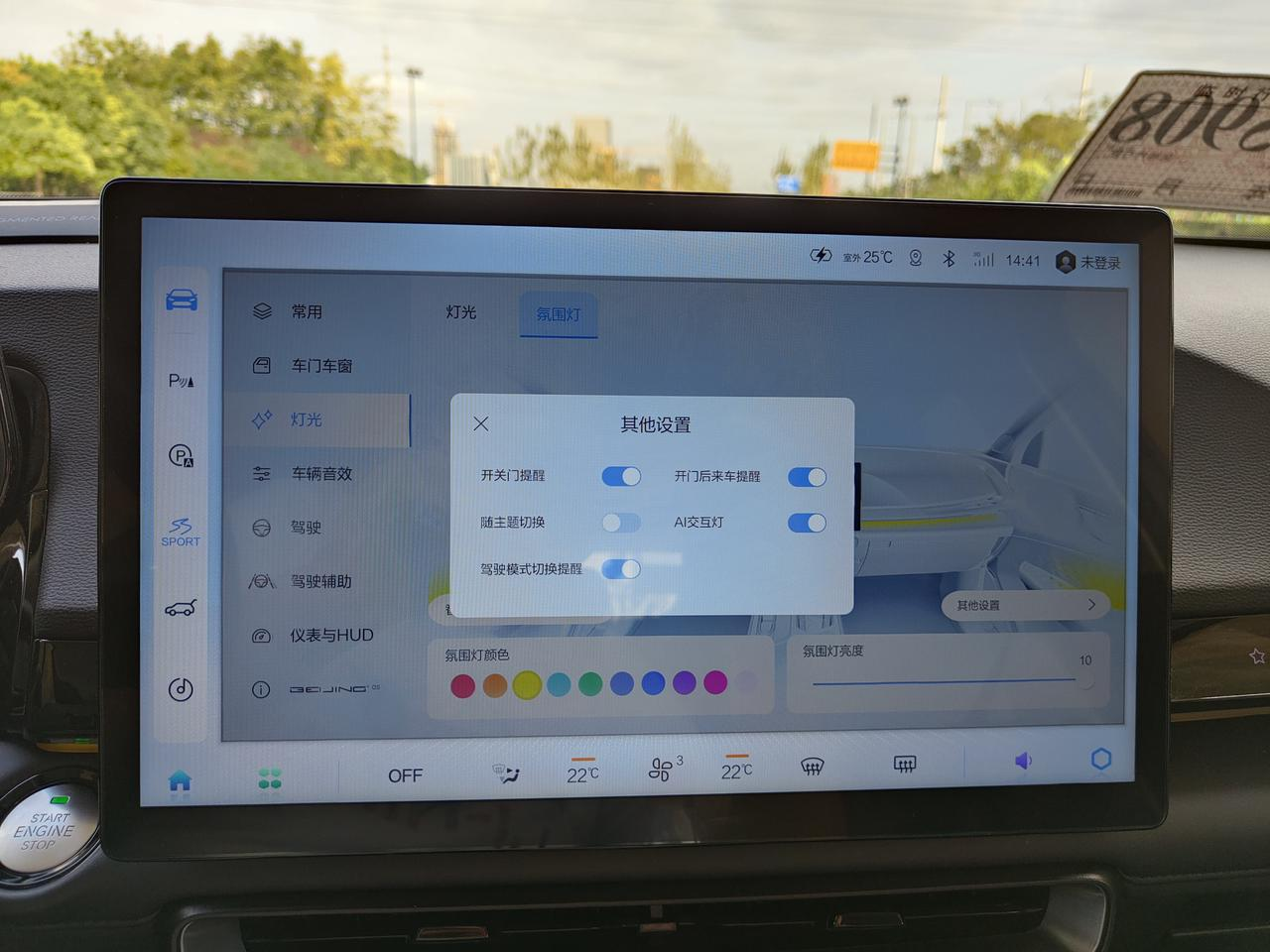
In the sound settings, there are also multiple options, but I want to mainly talk about the turn signal warning sound. This option is mainly manifested in the volume of the turn signal, which is noticeably different. When set to medium, it can be quite harsh. I strongly recommend that cars with sound systems that can’t hear the turn signal sound should turn on this option.
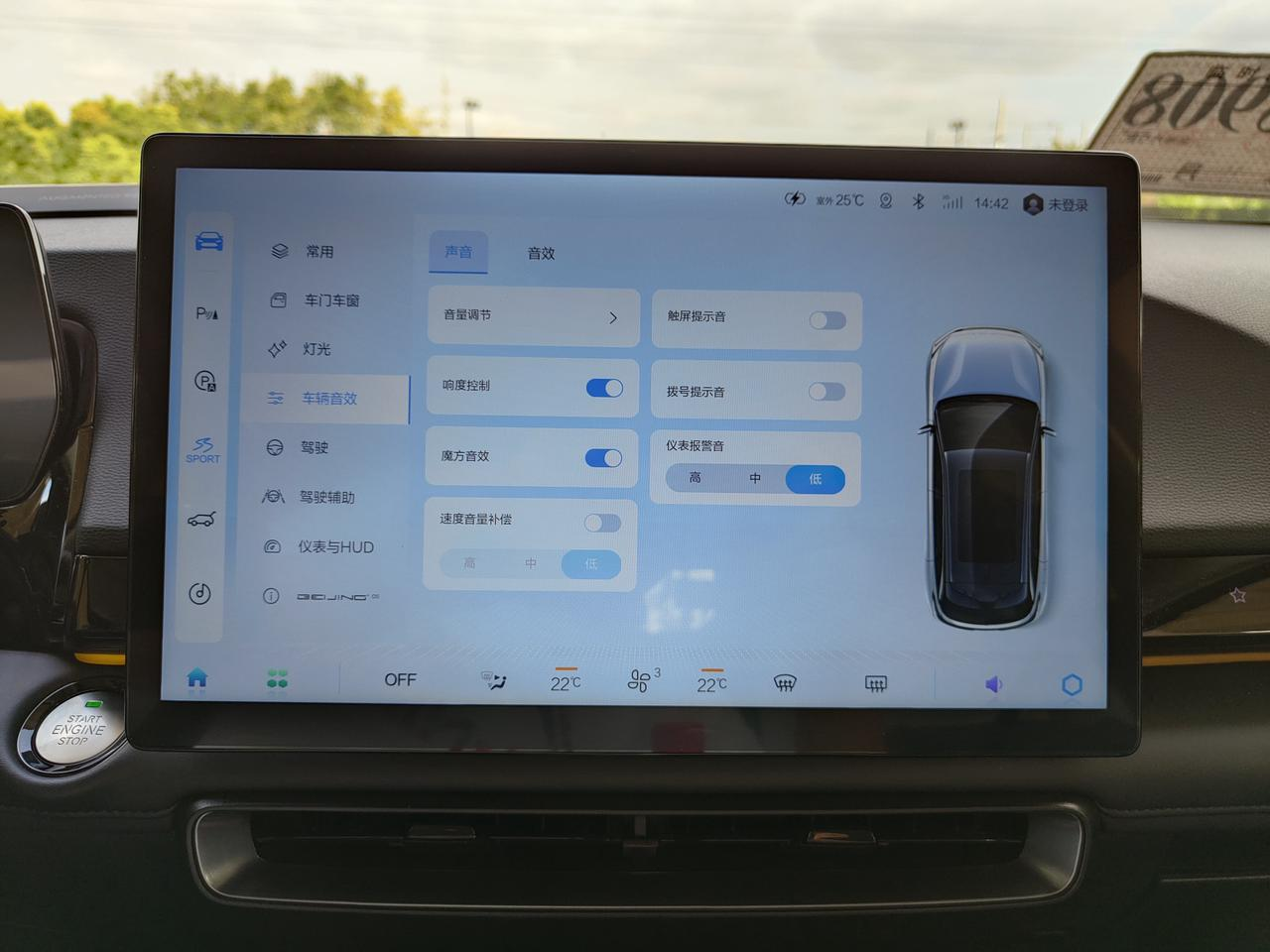
The cube supports multiple preset sound effects and can also be customized. Many cars do not have this feature.
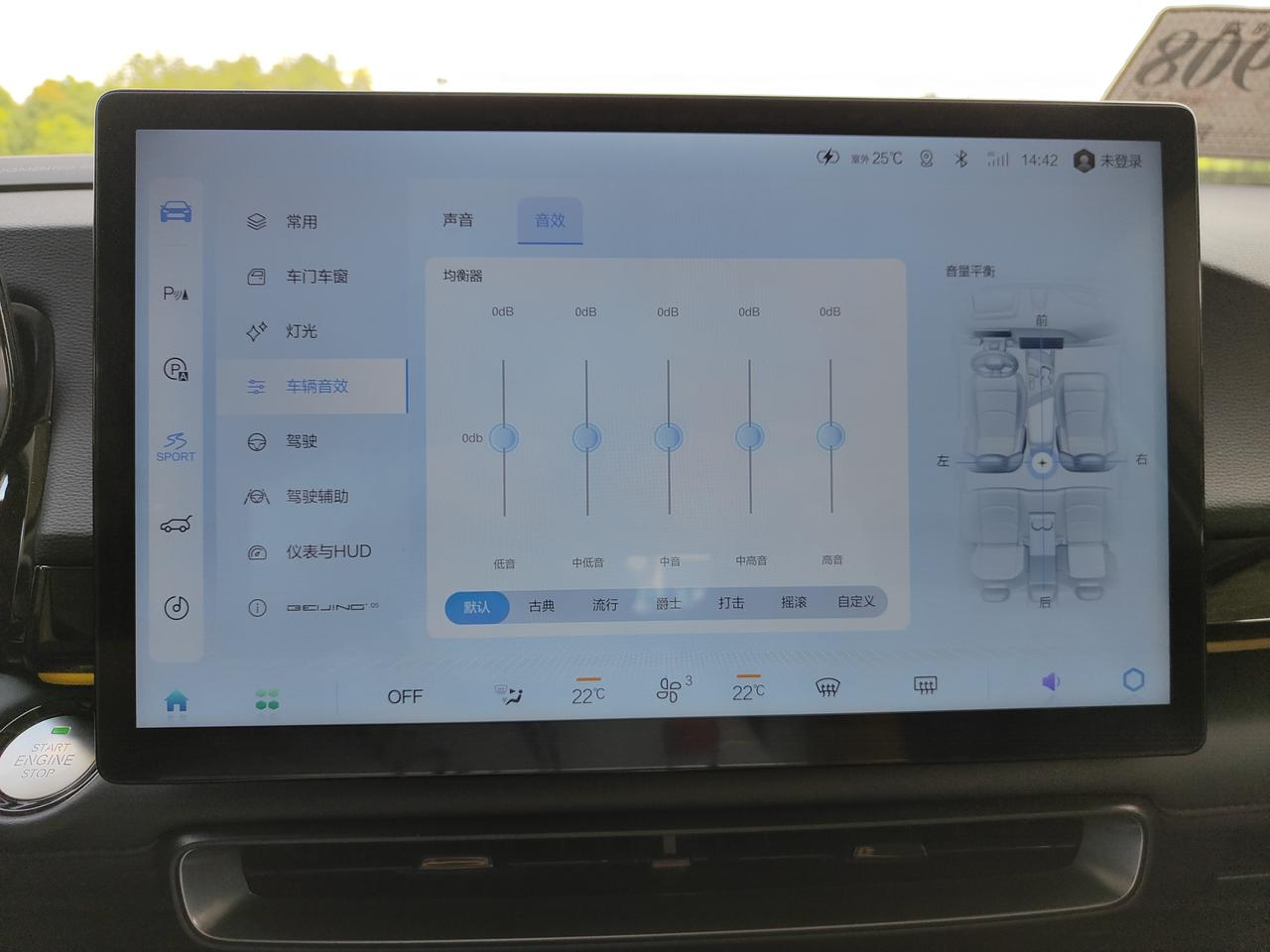
The electronic assist is set to standard by default. After trying it out, the feel is too light, so it is more comfortable to switch to sport mode. Custom key options for the steering wheel are not very practical, and only the navigation function is commonly used.
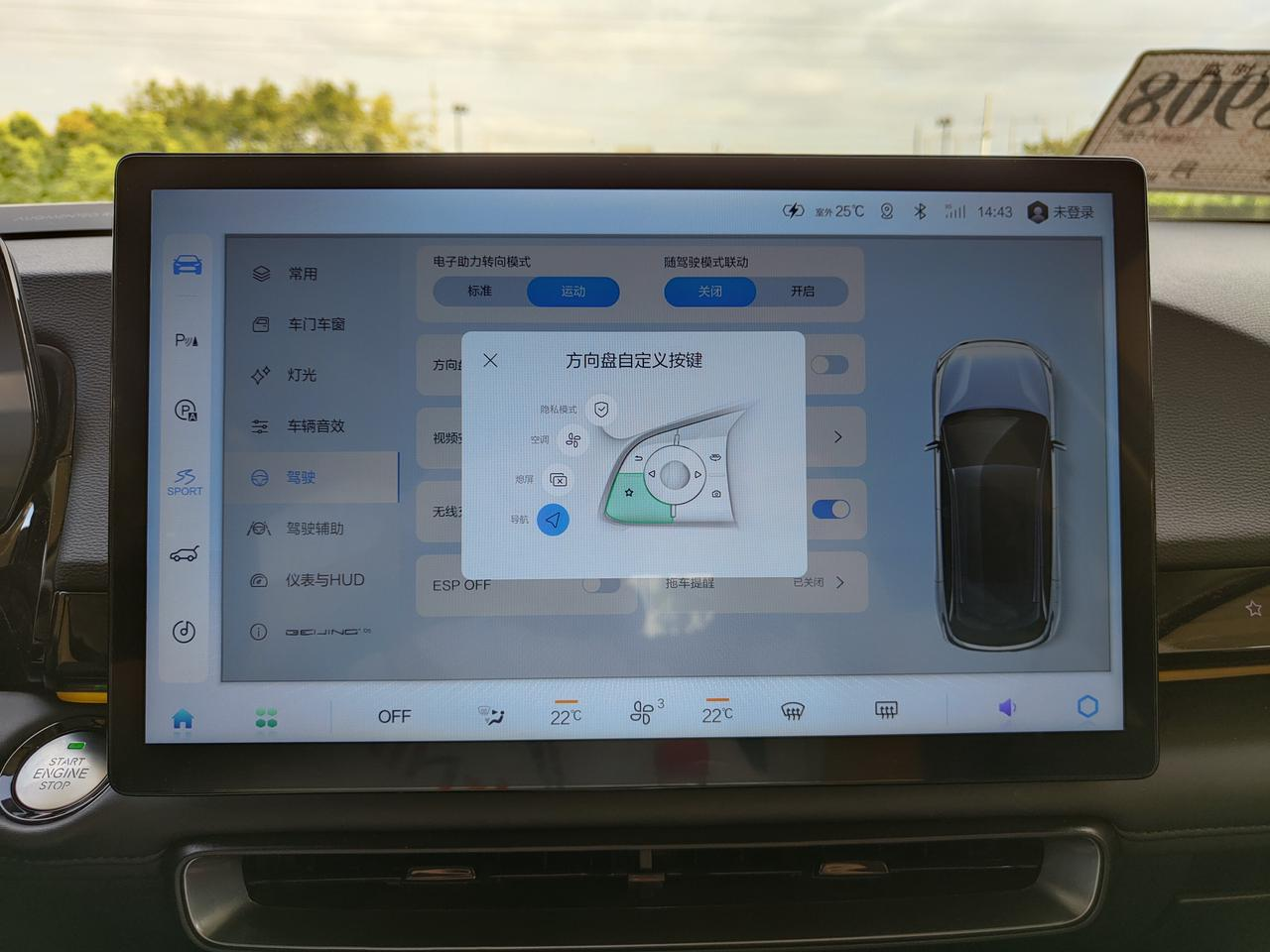
The BAIC Cube has a 0-100 km/h acceleration of 7.8 seconds, which is already small sports car-level among fuel cars. Additionally, the car supports turning off the ESP function, increasing the sense of sportiness.
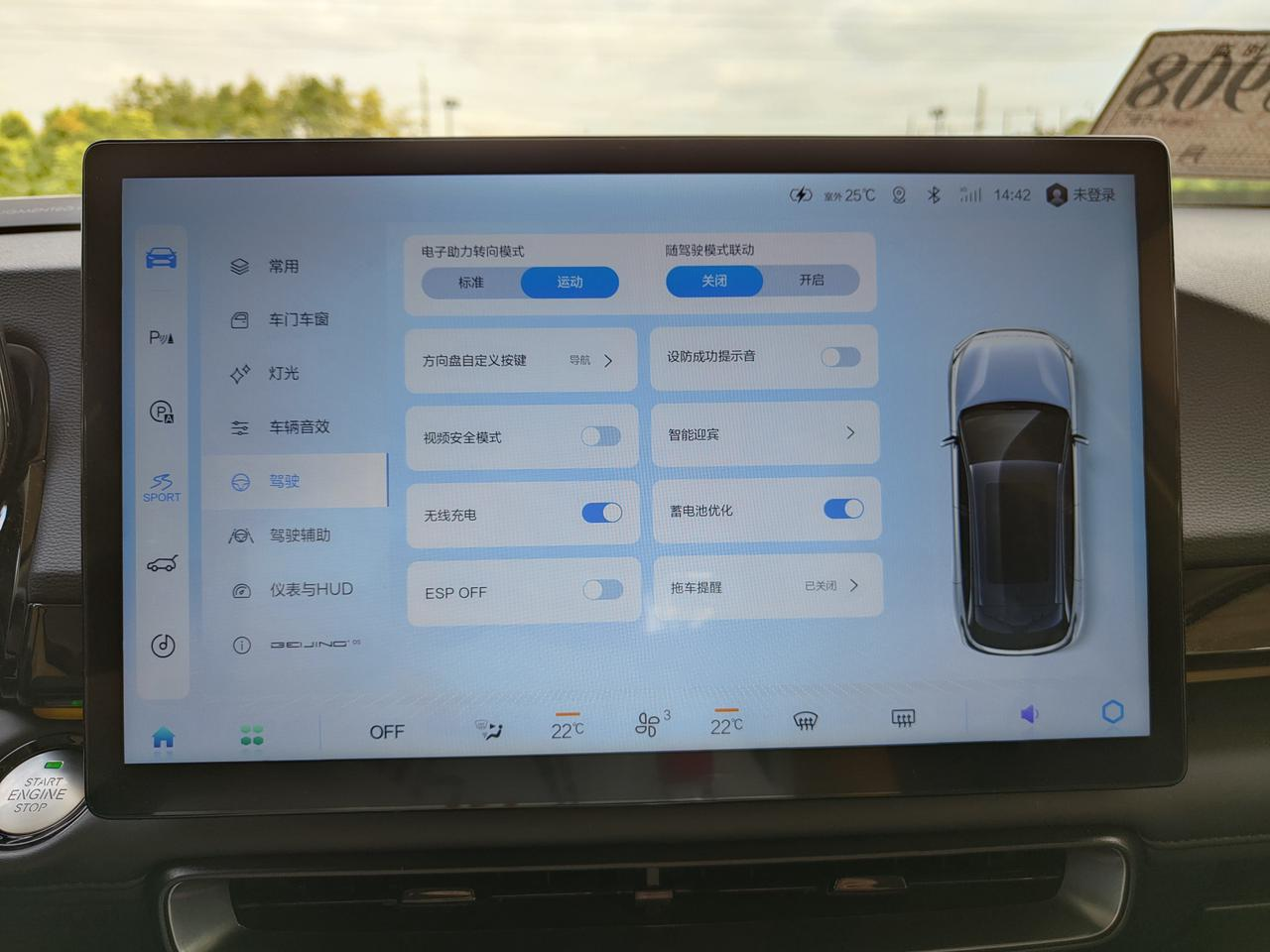
The car also supports intelligent welcome function, where the seat will automatically move back when the driver enters or exits the car.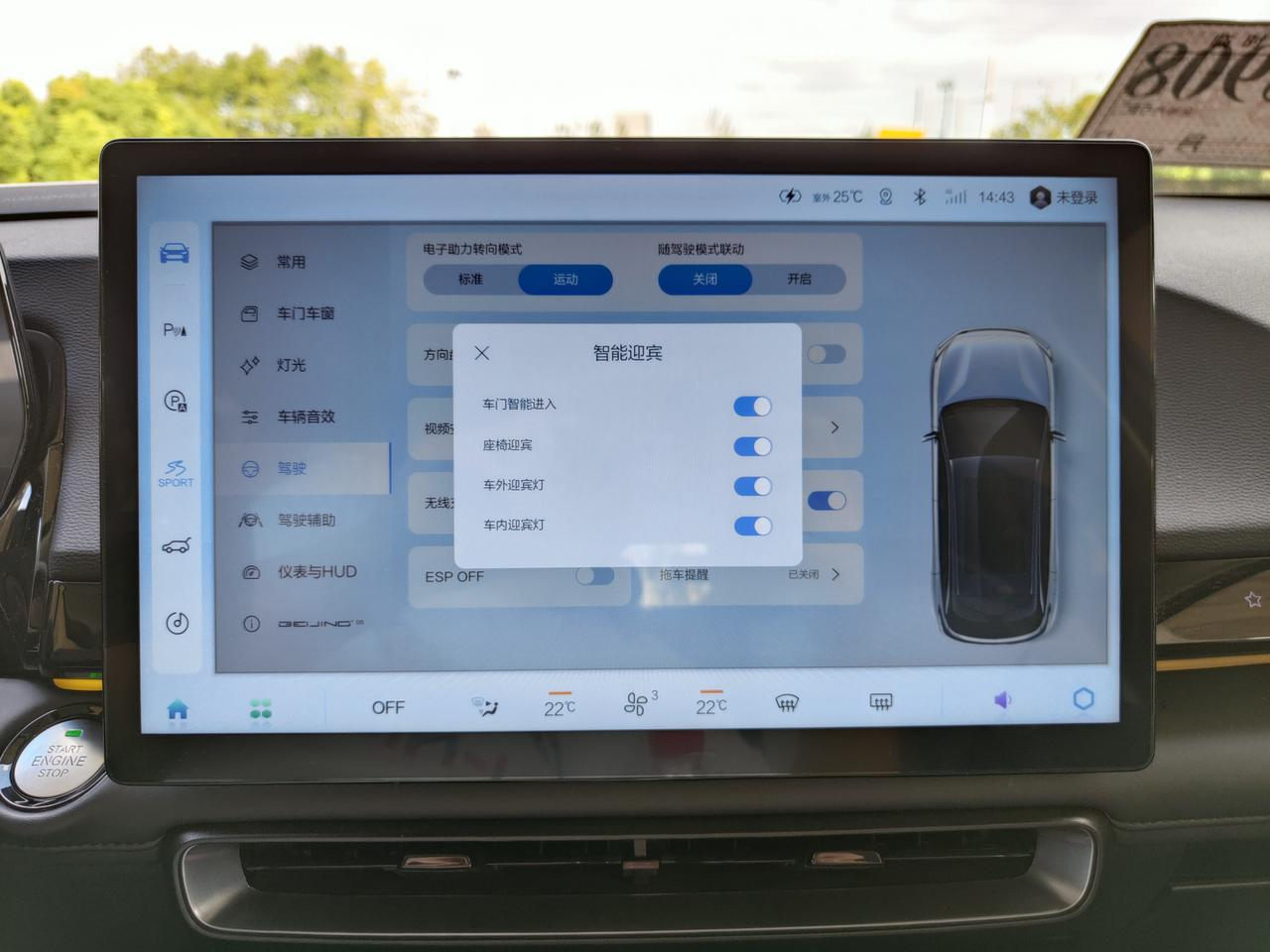
Arriving at the driver assistance feature menu, the options provided by the Cube are all-inclusive. Besides the advanced navigation assist feature, all other basic driver assistance features can be found here.
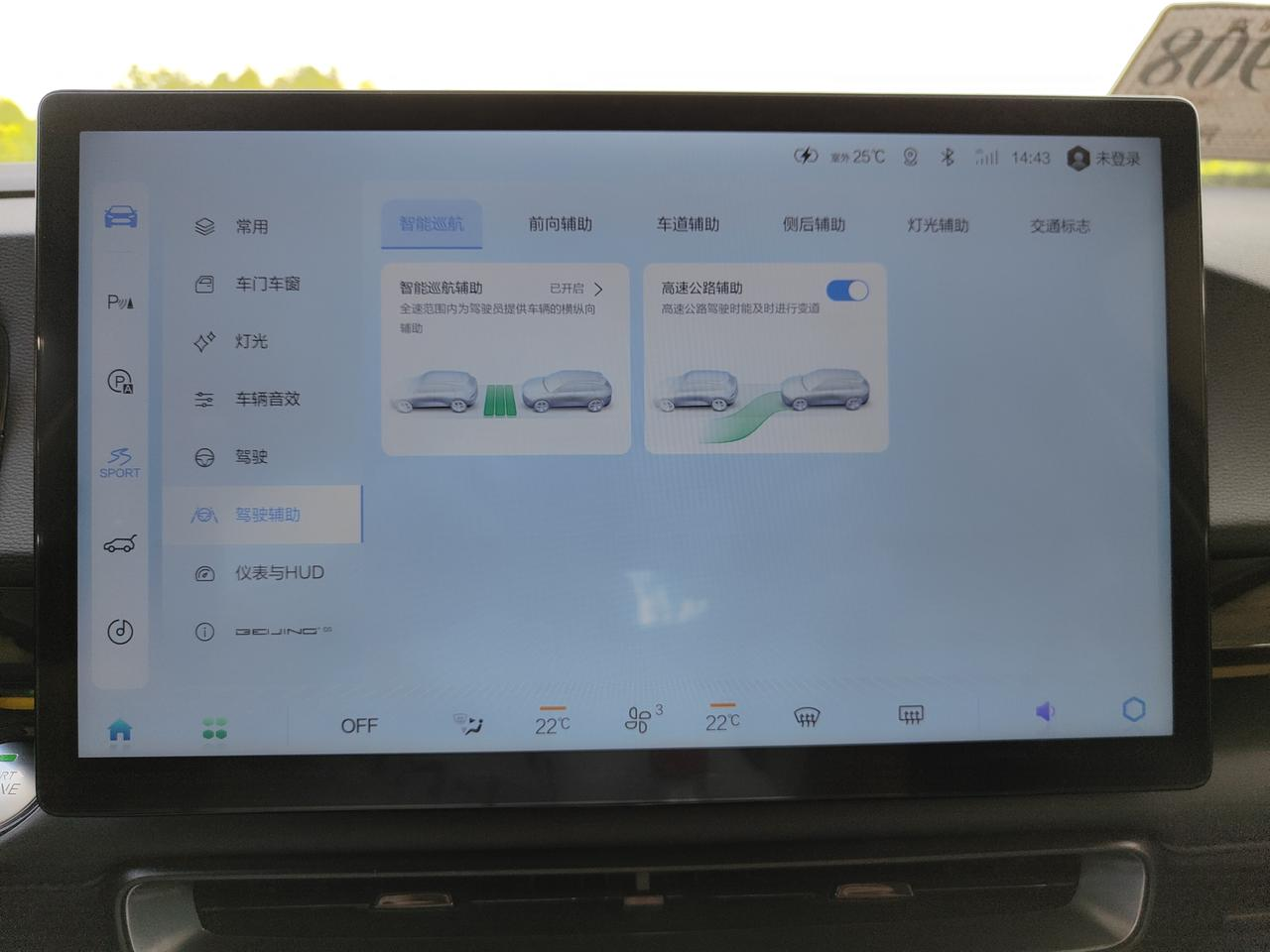
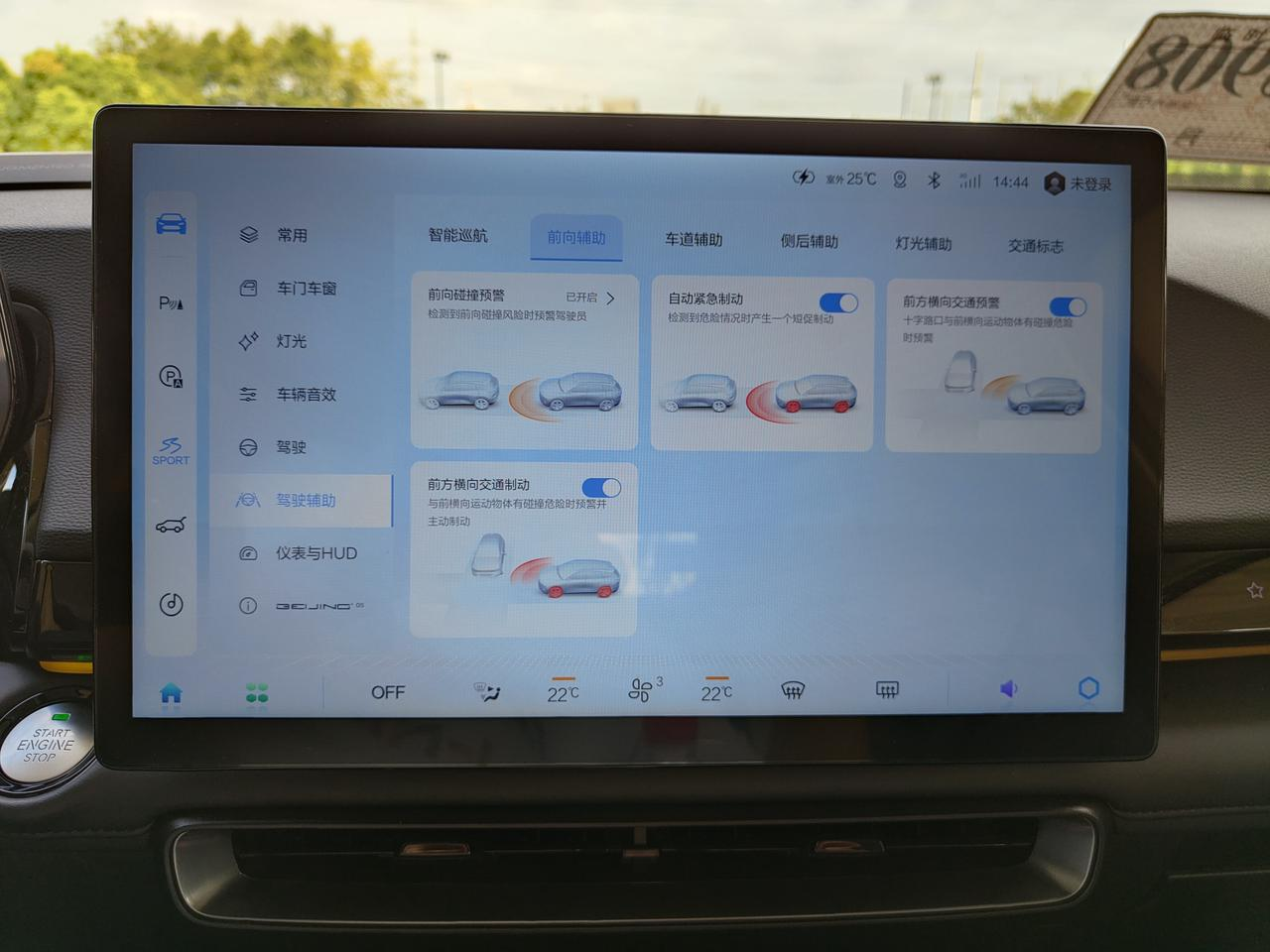
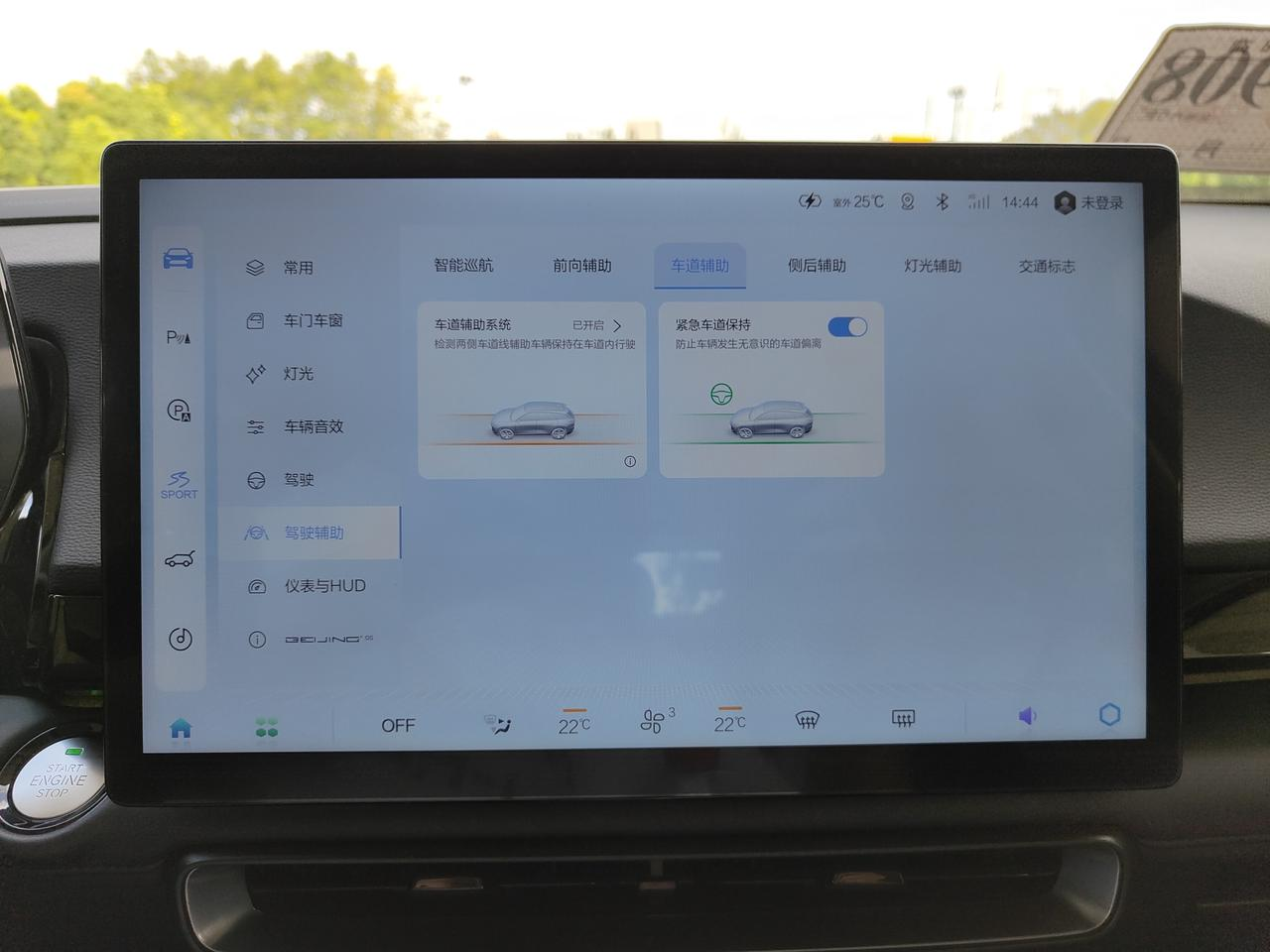
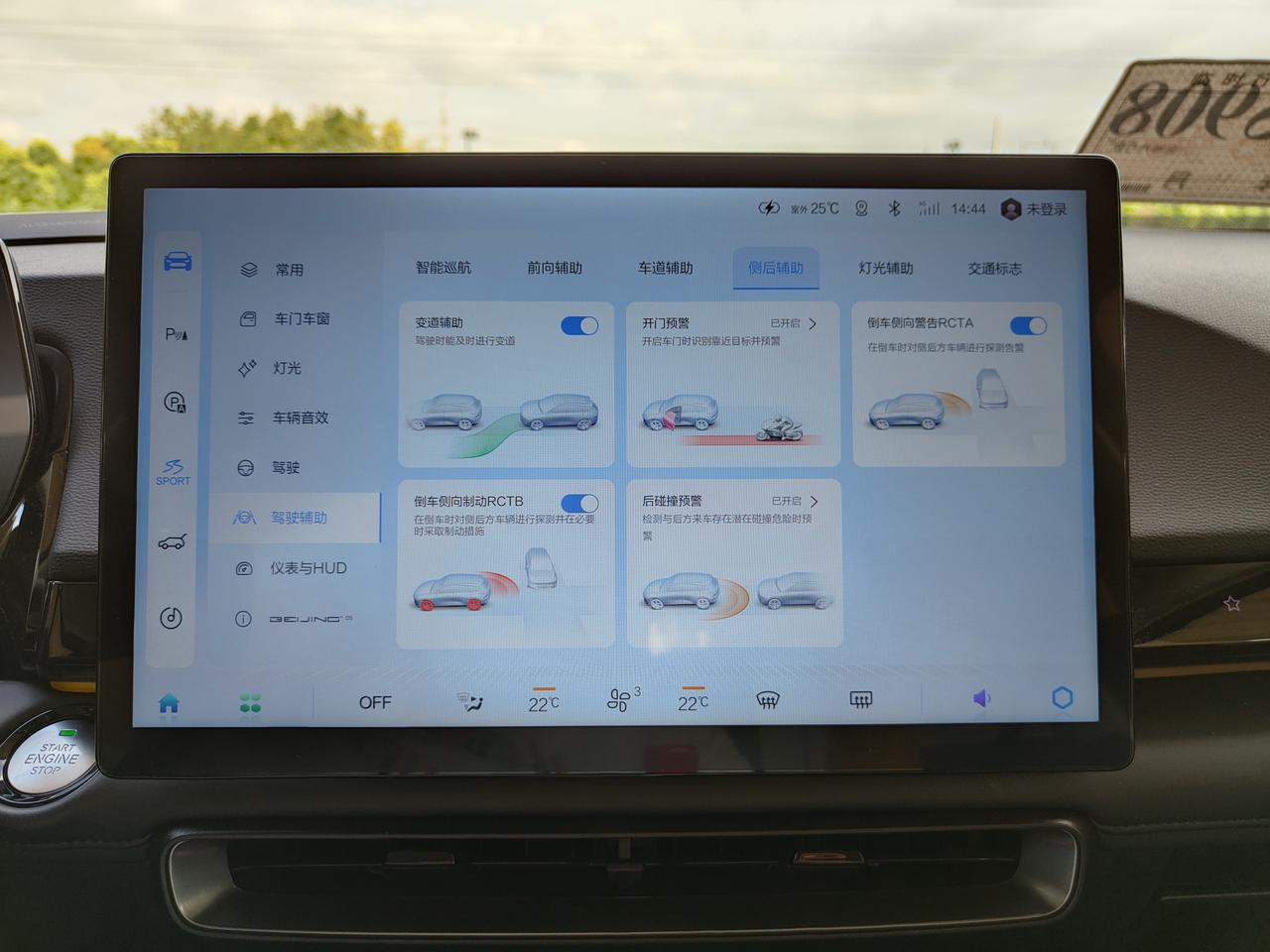
It should be noted that it is not recommended for users to turn on the intelligent high-beam function. High-beam headlights are generally not frequently used in urban areas, and if the system wrongly identifies scenarios and turns on the high-beam headlights which leads to a violation, it would be a case of loss more than gain.
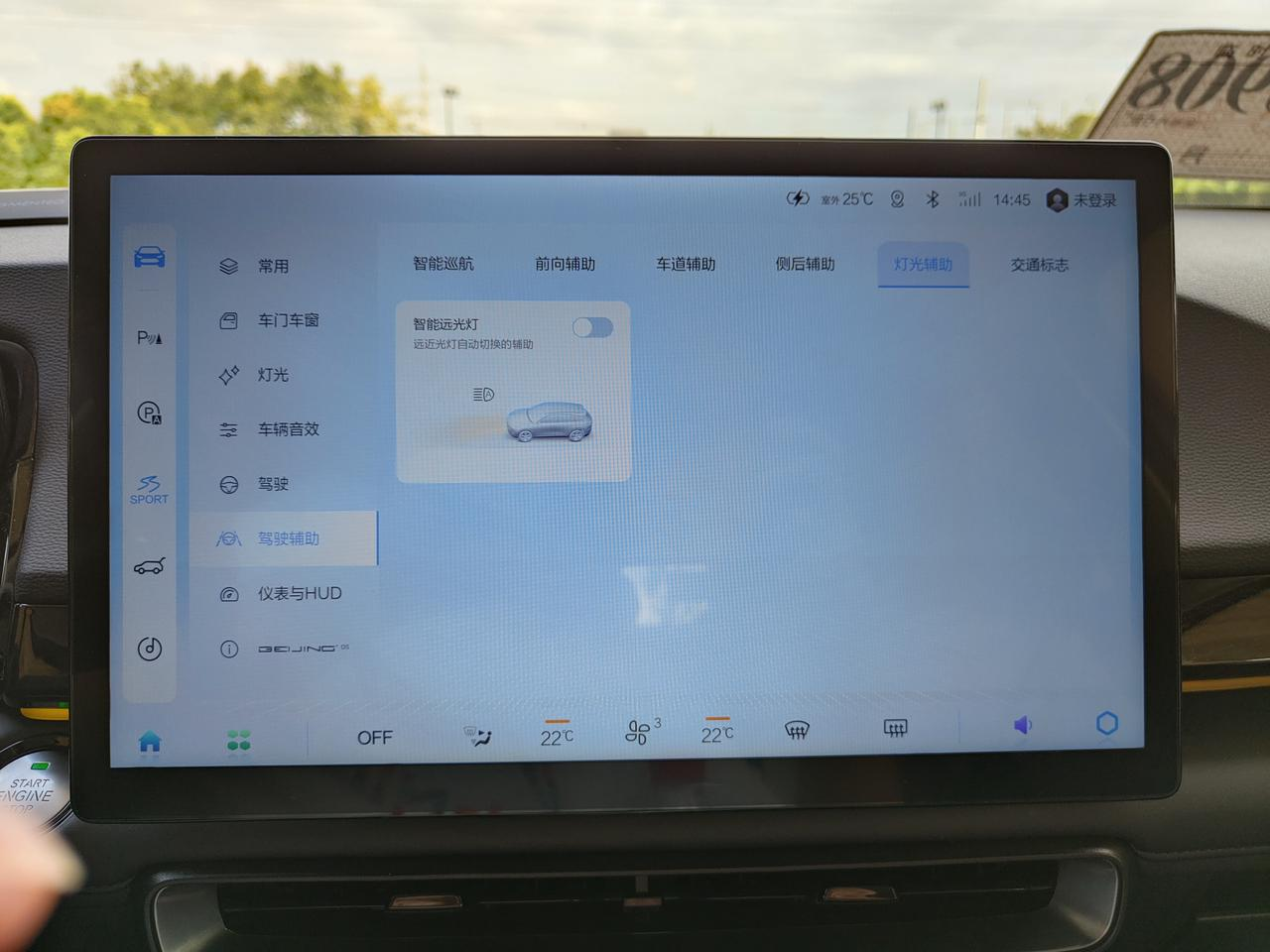
I found out that this car even supports recognition of traffic lights. I tried it out and it can correctly recognize traffic lights at some intersections.
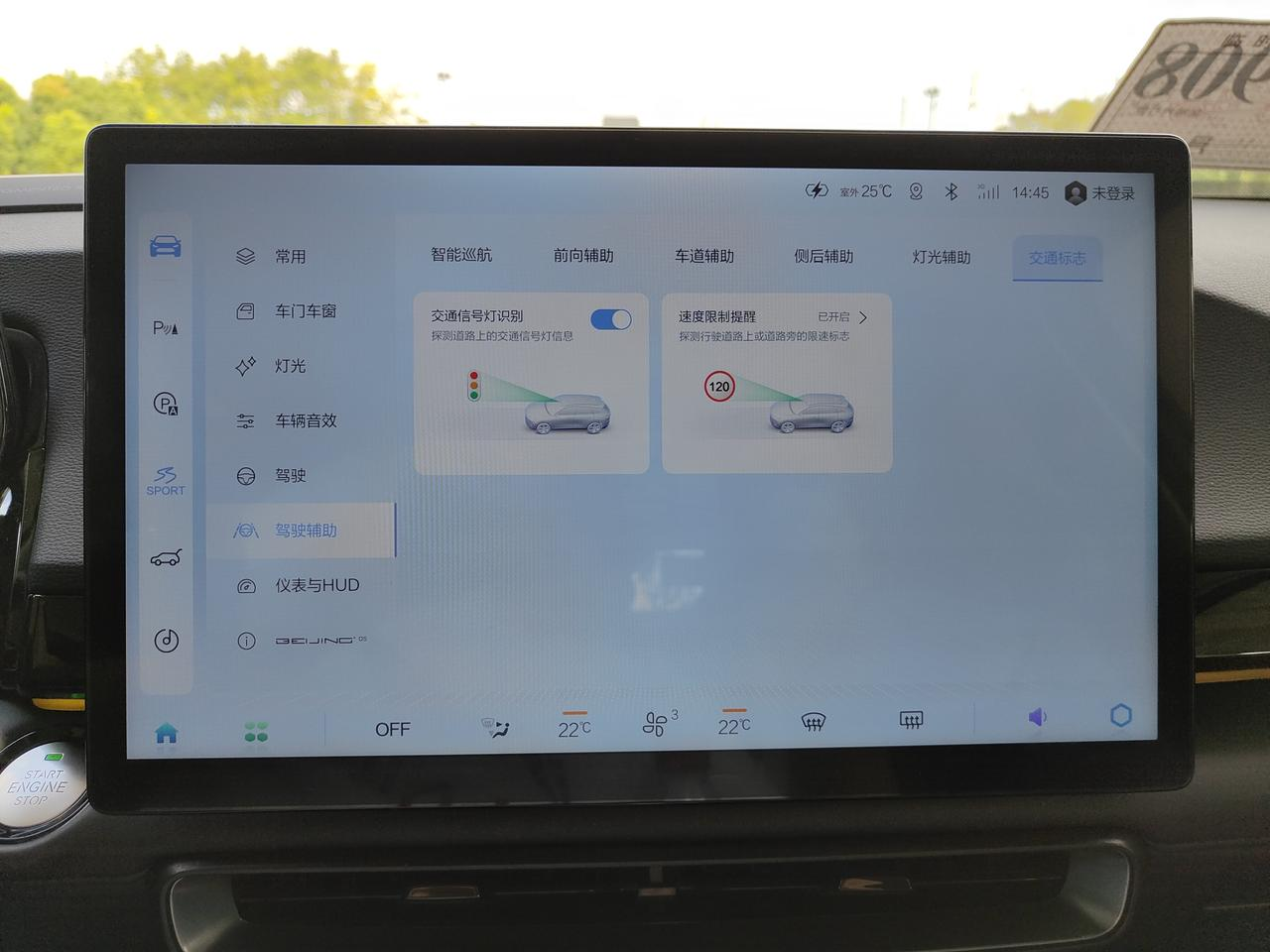
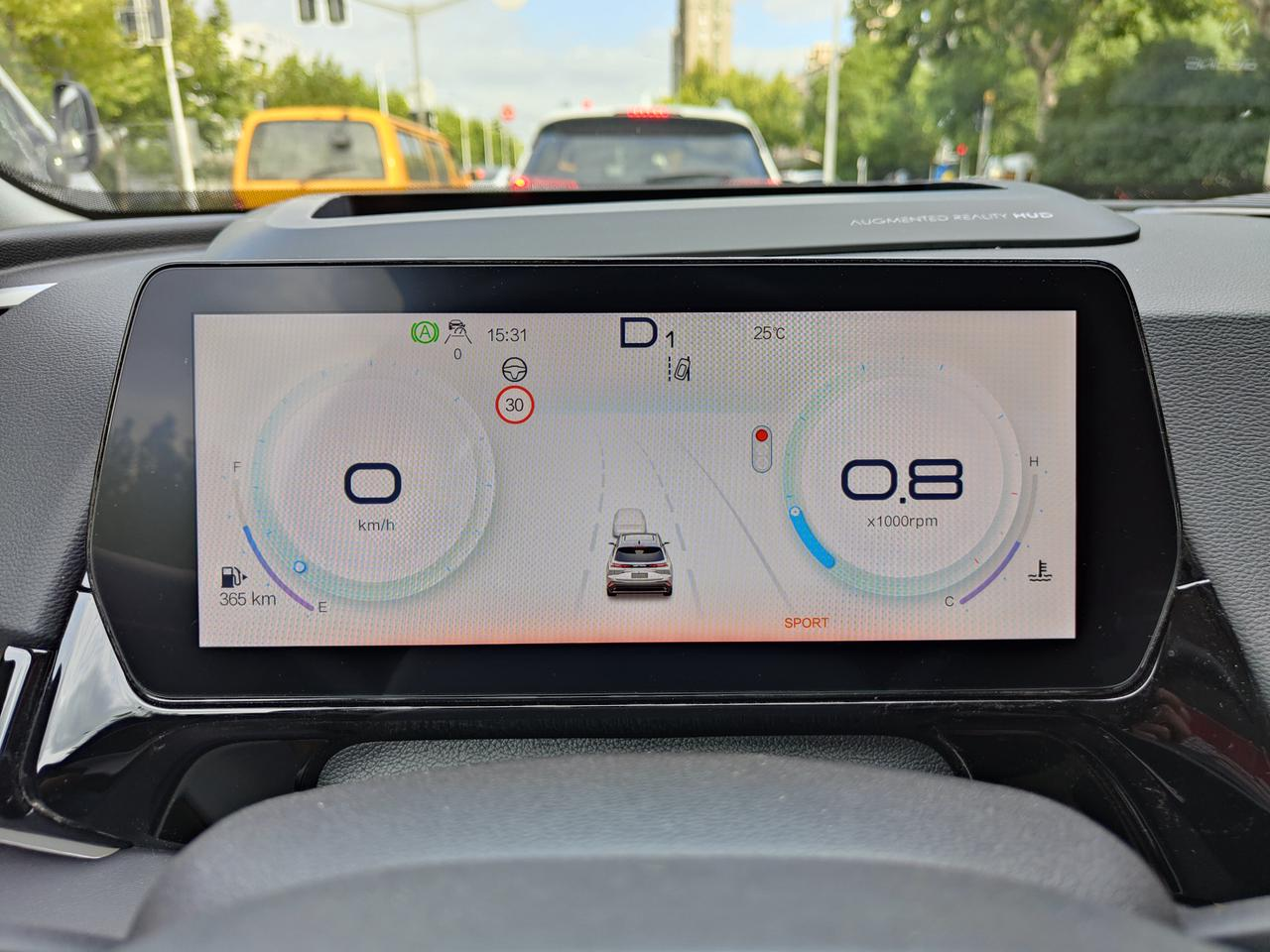
The brightness level of the instrument panel can be adjusted up to ten levels, and there are three levels of adjustment for driver detection.
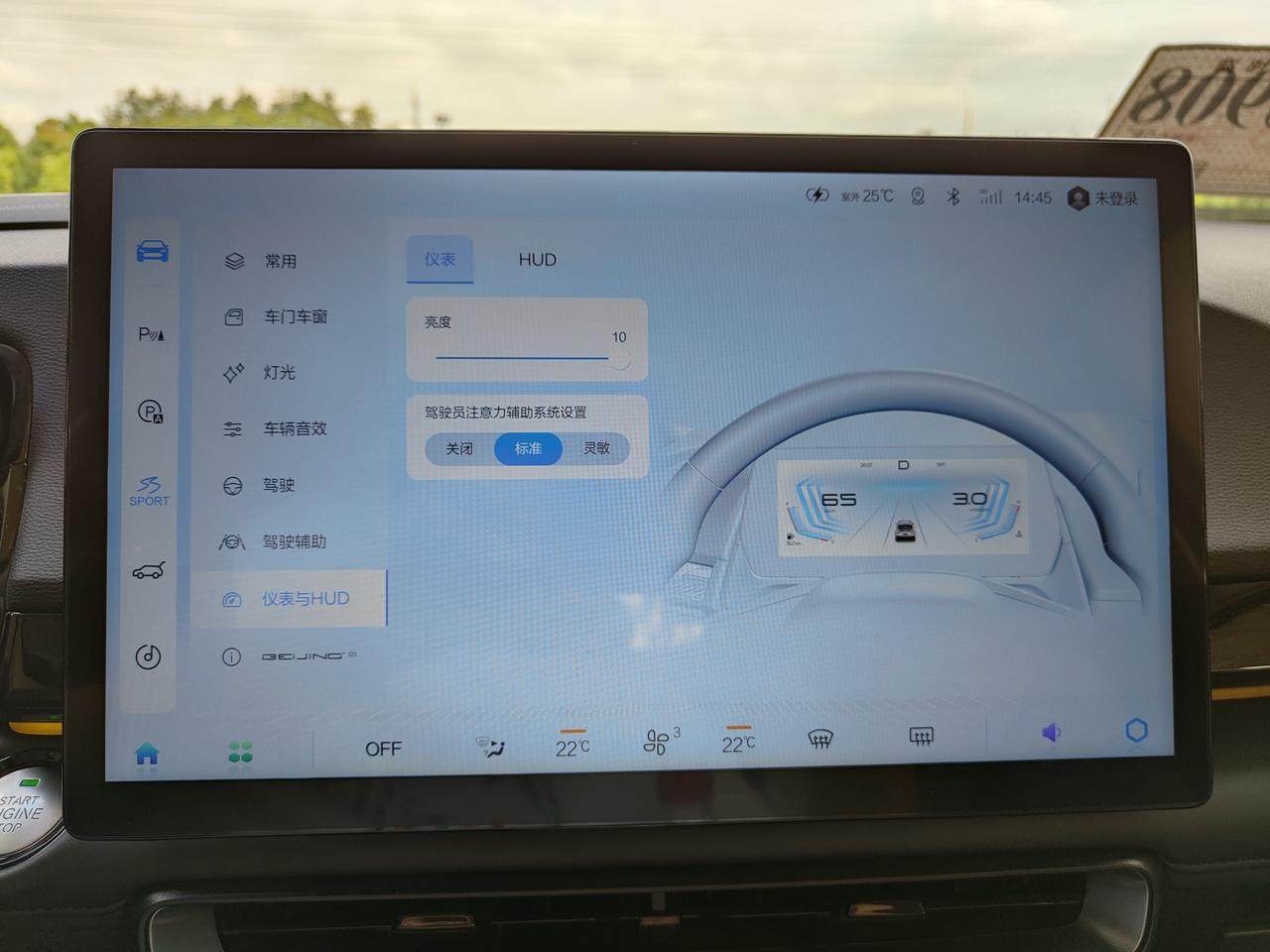
The HUD supports two display colors. When switching to the snow mode, the information will be displayed in green, which is more practical in the northern regions where it snows heavily during winter.
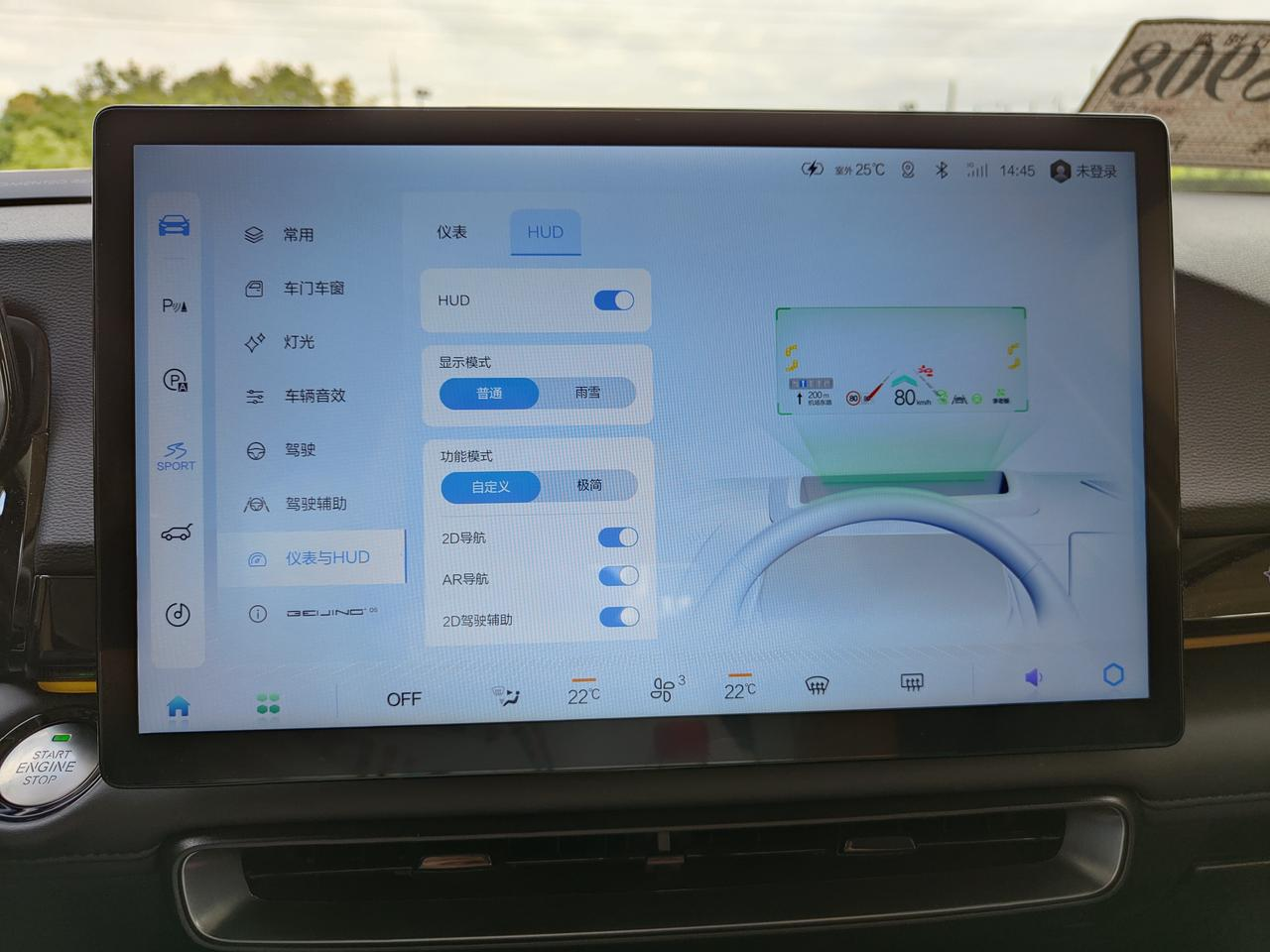
The function mode can be customized to select and freely display various information. To prevent obstructing the driver’s view at night, a minimalist mode can also be selected.
Here is the HUD display of AR navigation after setting up vehicle navigation.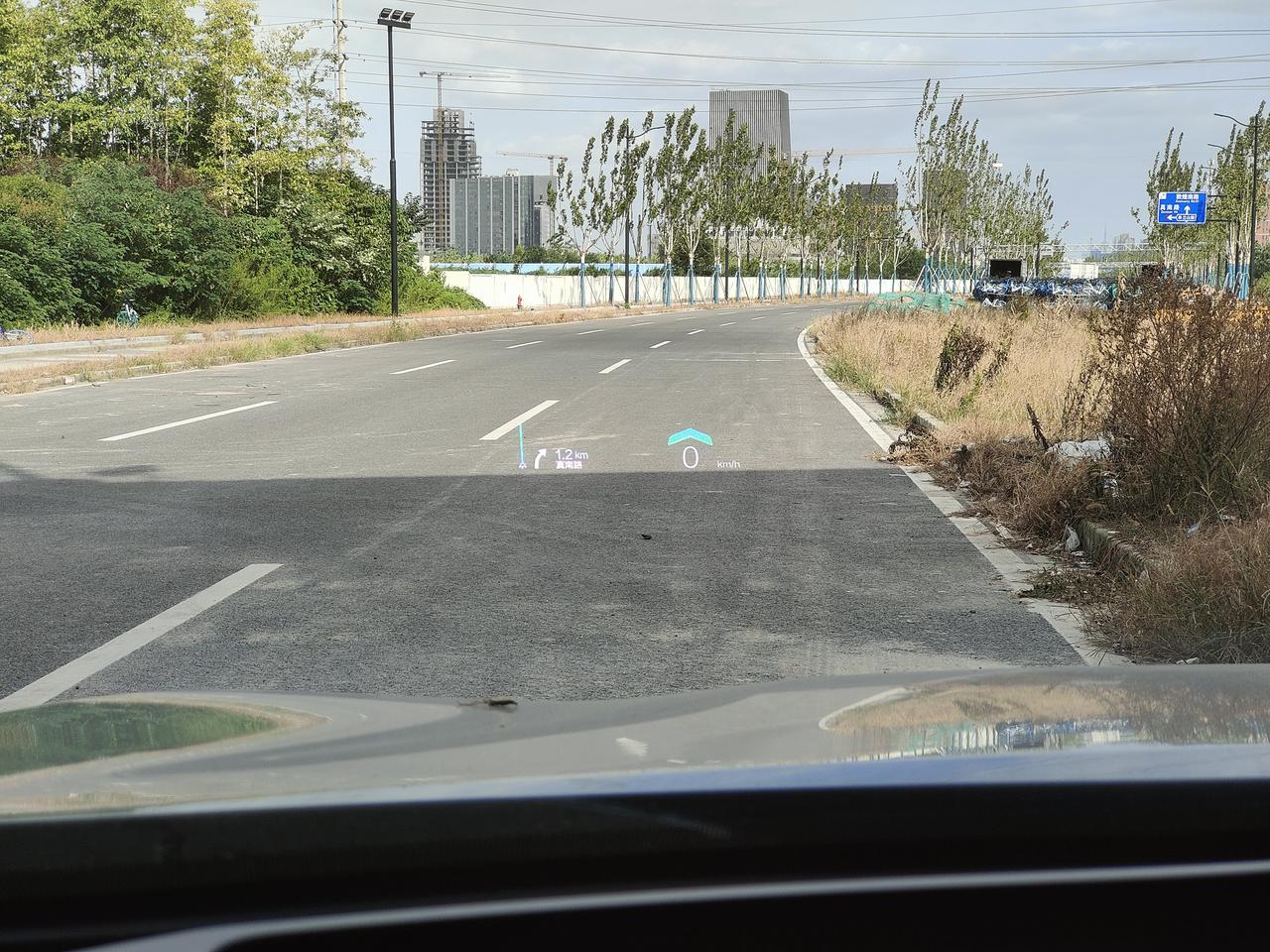
The infotainment system is displayed as BEIJING OS, version V 1.0.0, and there may be more customization options available in subsequent OTAs.
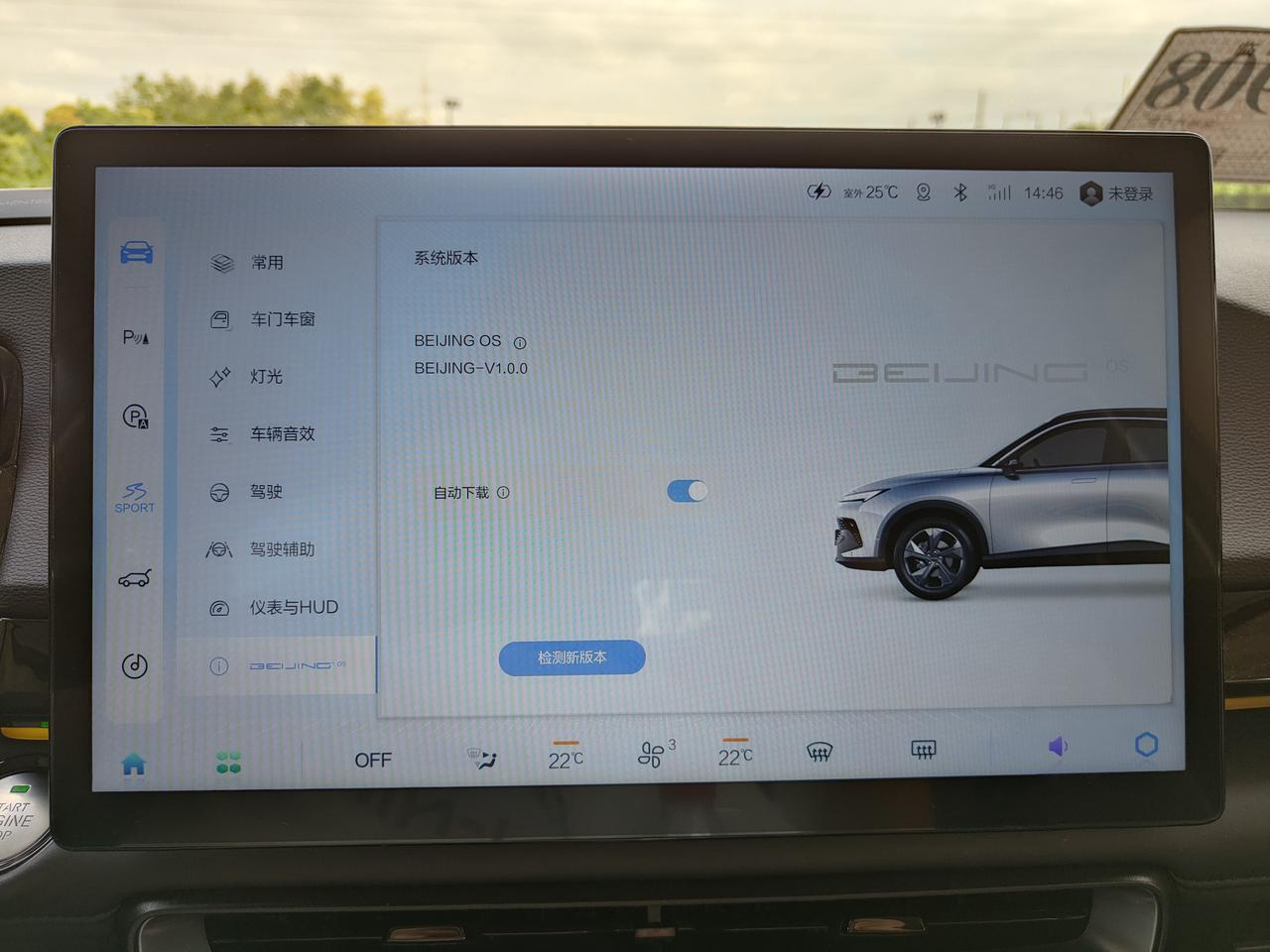
The navigation system uses the car edition of Gaode Maps and works without any issues.
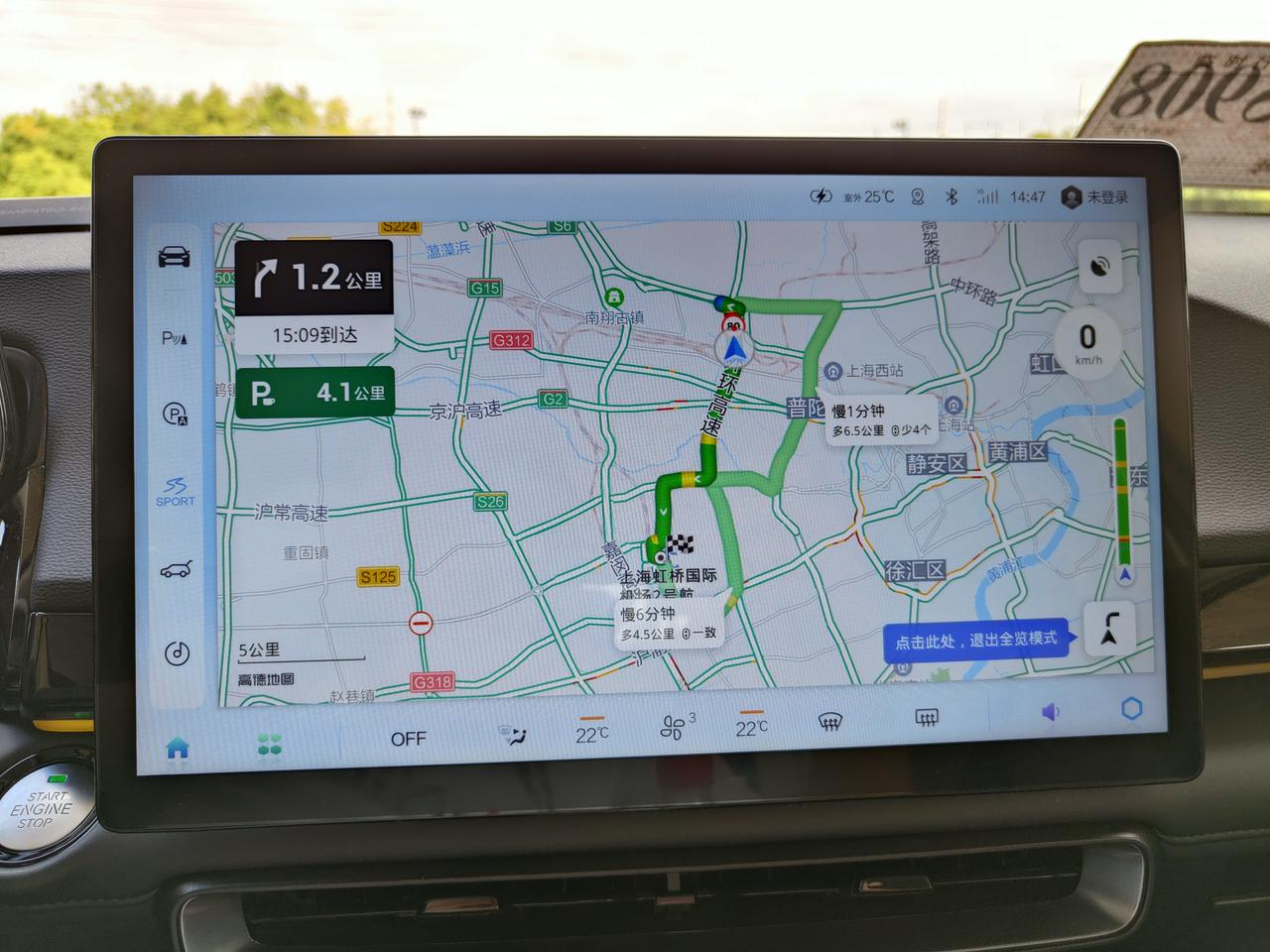
In the application menu, there is actually a second settings menu, which is not very user-friendly for first-time car owners. Hopefully, future OTA updates will integrate the two settings menus.
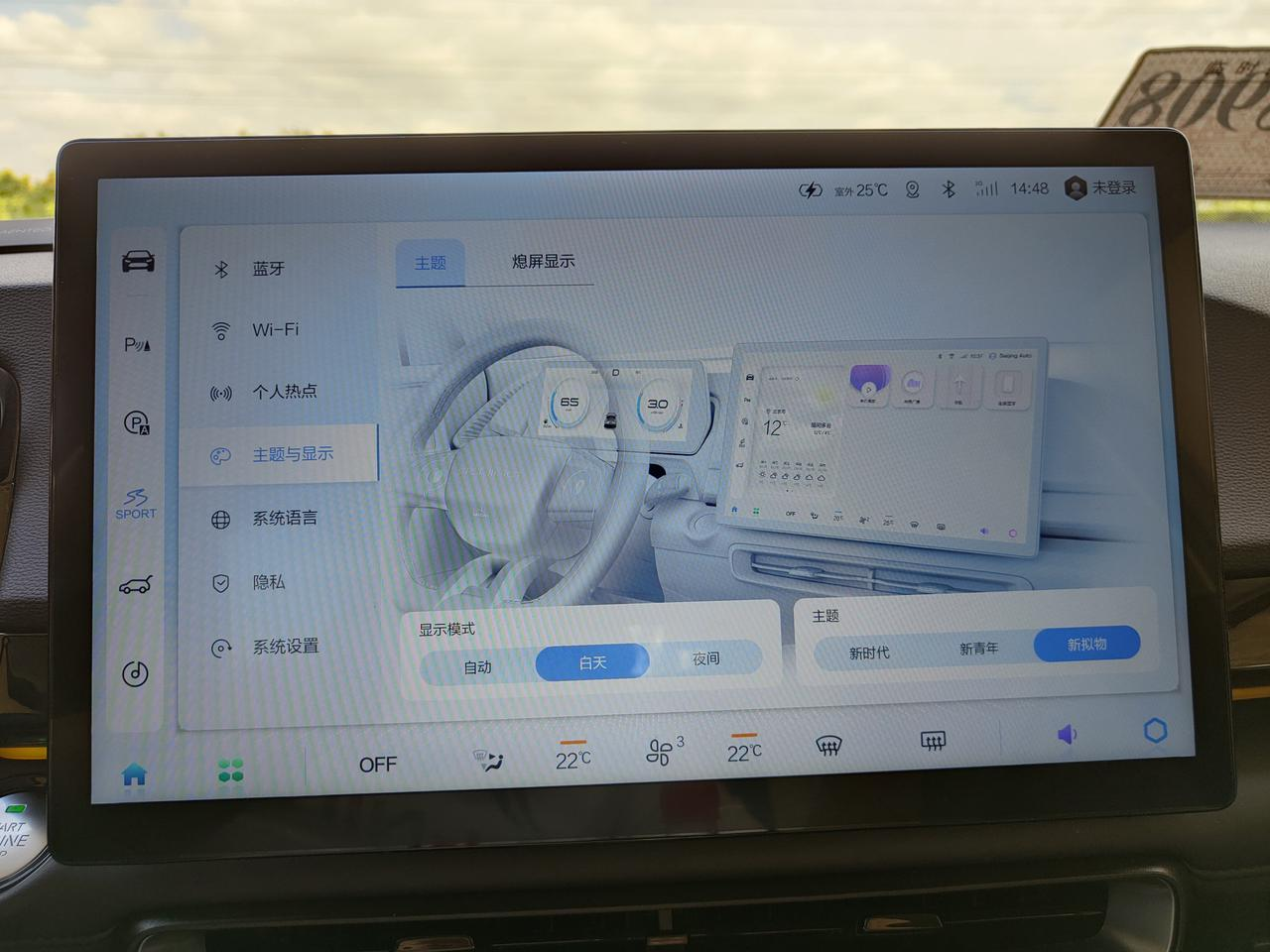
The theme and display menu provides three display modes, where the previously mentioned dashboard theme switching can also be set.
After the central control screen is turned off, it can display both the clock and the numeric display. It’s just like on a mobile phone or tablet.
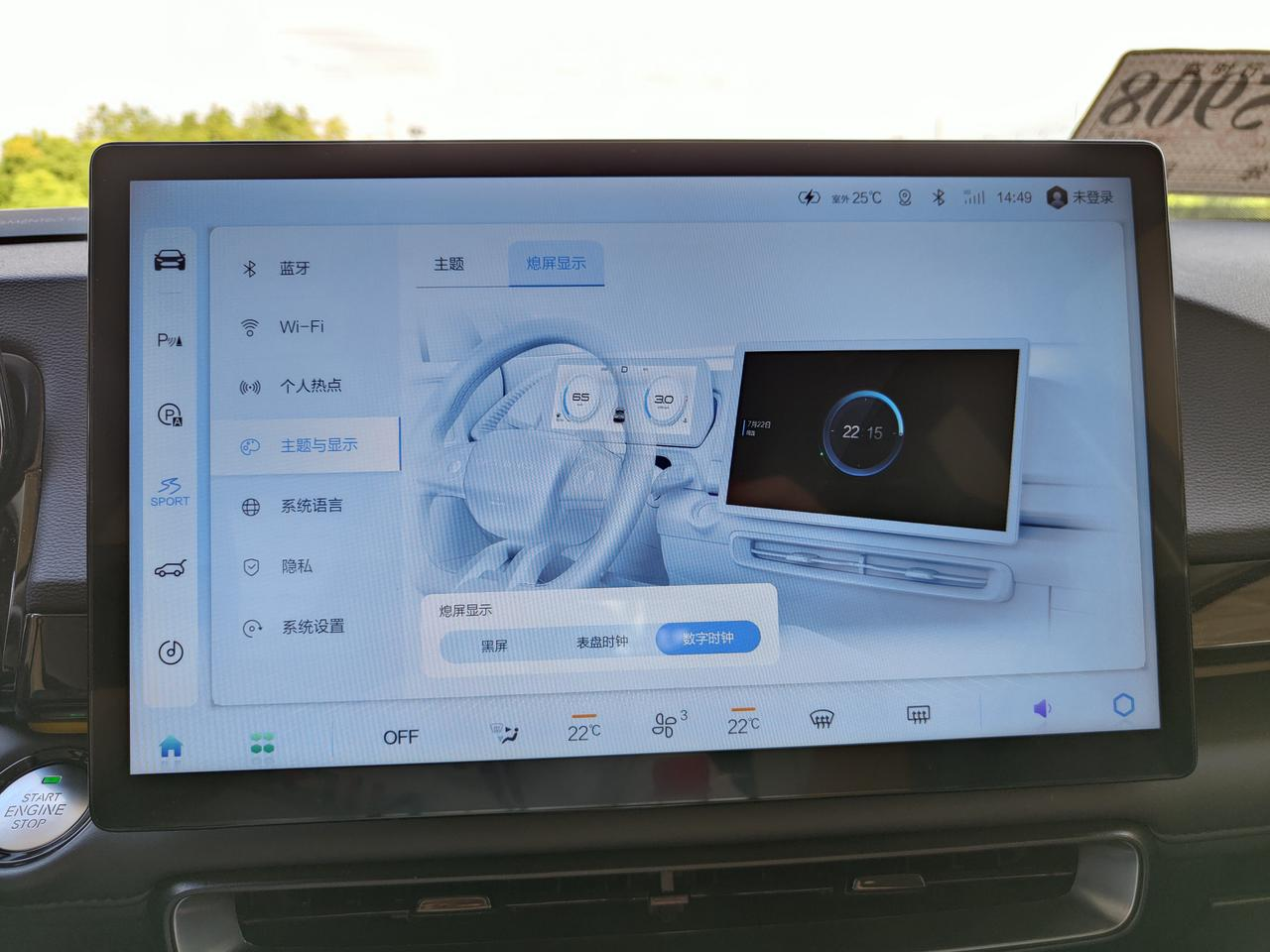
The bottom dock bar supports sliding to adjust the air conditioning temperature and wind speed after clicking.
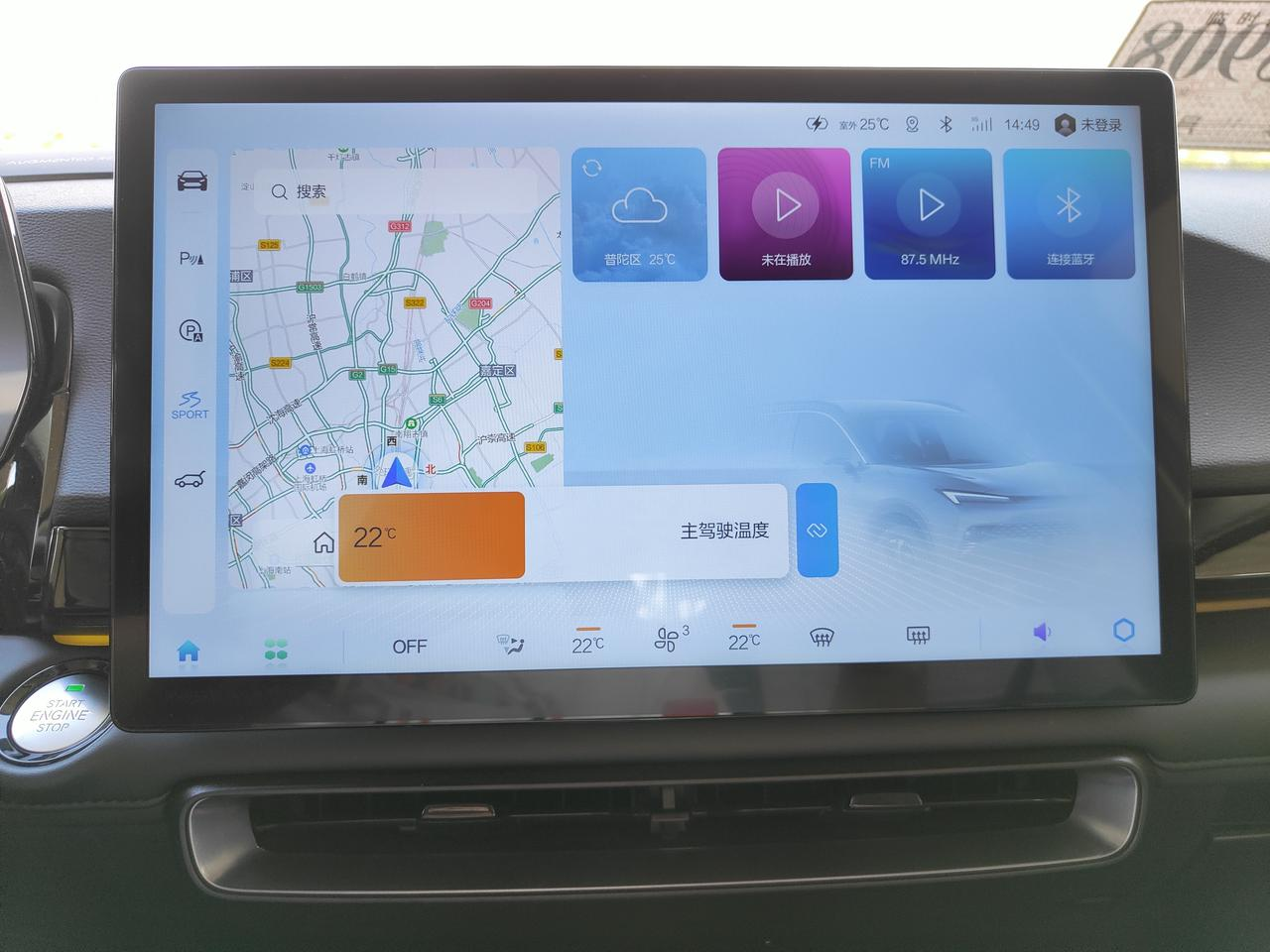
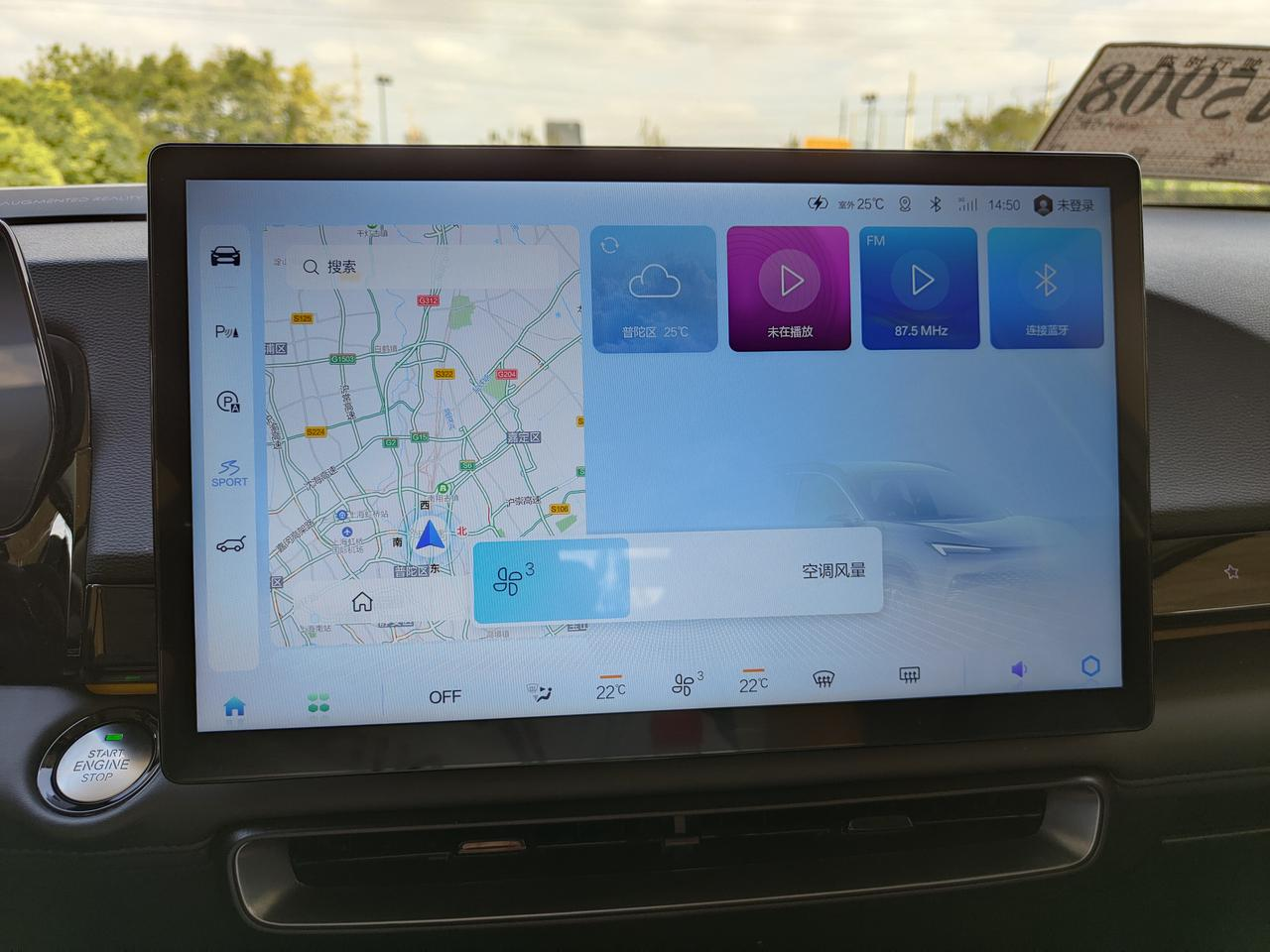
You can also click to enter the main air conditioning interface for more detailed adjustment.
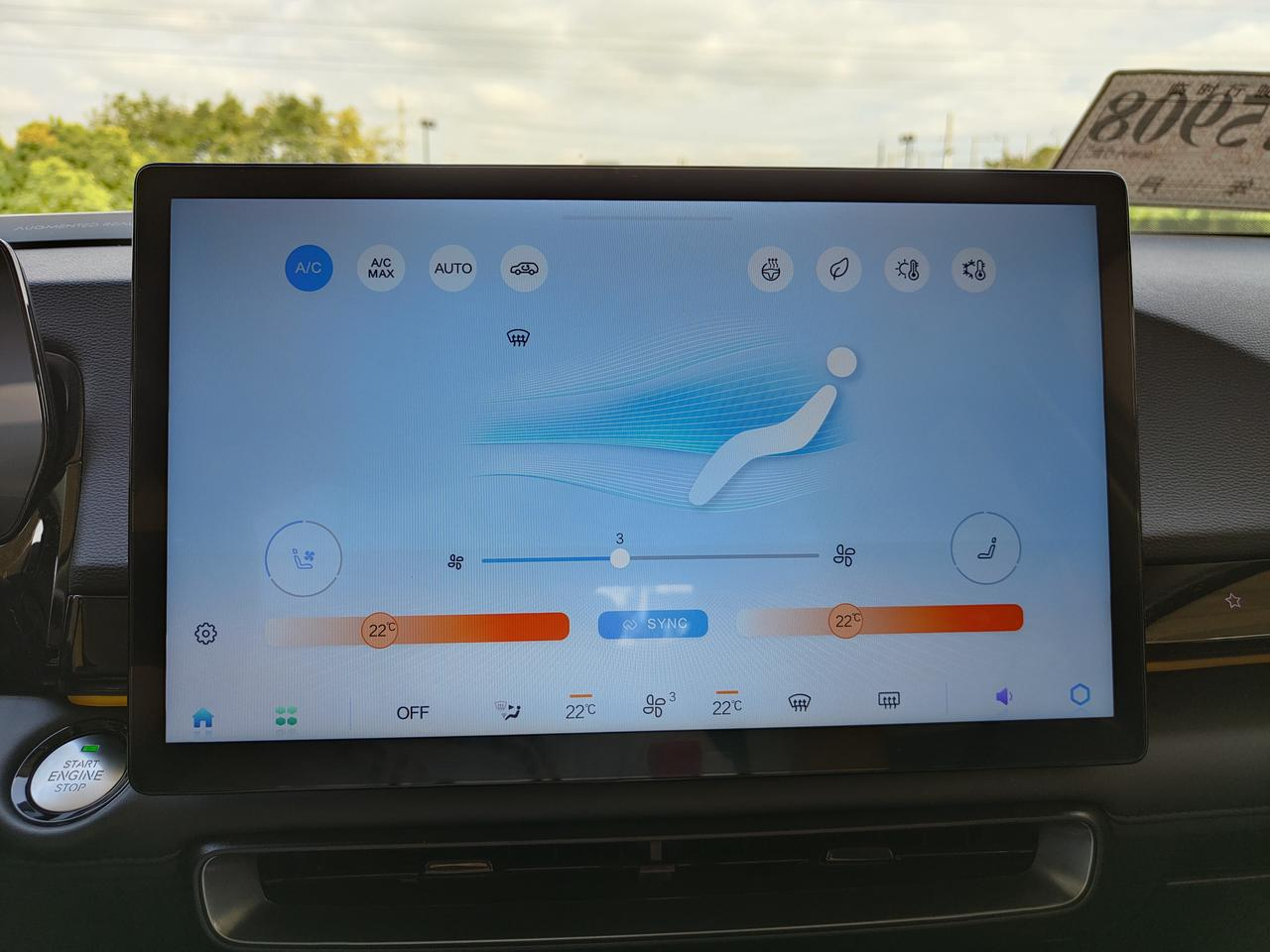
Starting from the Diamond version, both the driver and front passenger seats support ventilation and heating functions, and in addition to seat cushion ventilation, there is also backrest ventilation. The steering wheel heating function is only available in the Star version.
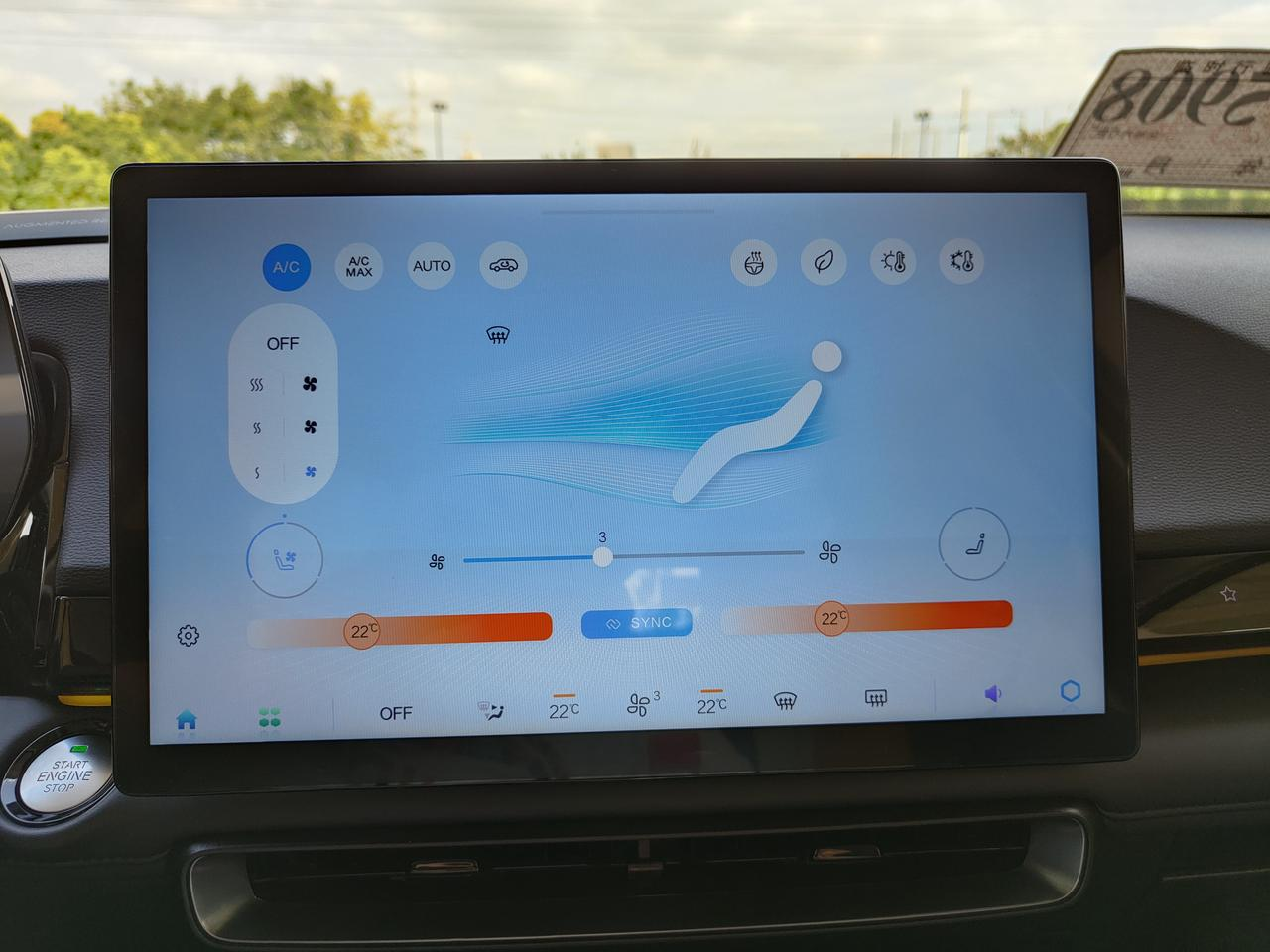
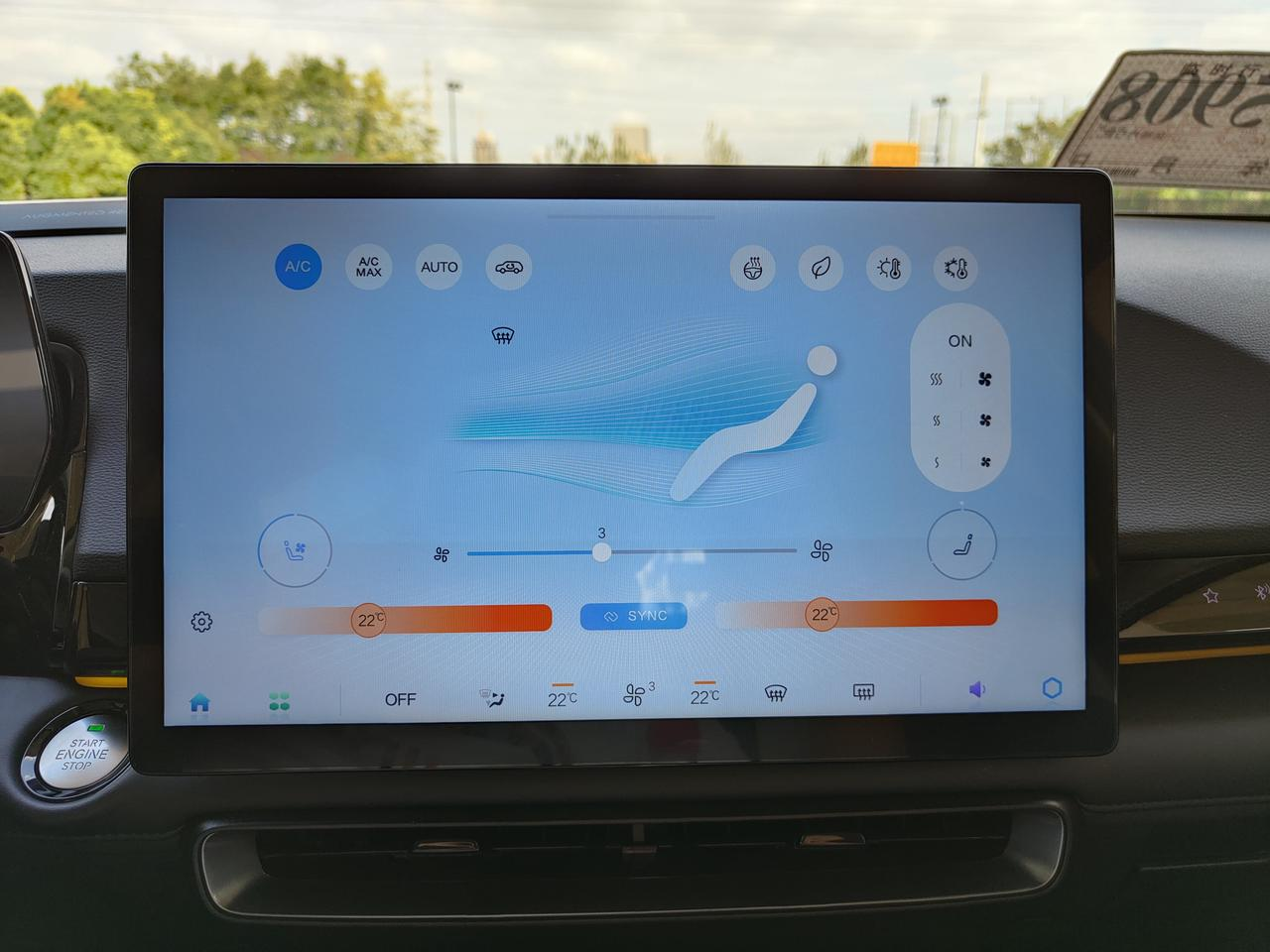 The air conditioning settings provide various practical functions, including the self-drying function that can prevent bacteria caused by condensation water residue in the pipeline that causes the air conditioner to smell, and the pre-ventilation function which is quite useful in summer.
The air conditioning settings provide various practical functions, including the self-drying function that can prevent bacteria caused by condensation water residue in the pipeline that causes the air conditioner to smell, and the pre-ventilation function which is quite useful in summer.
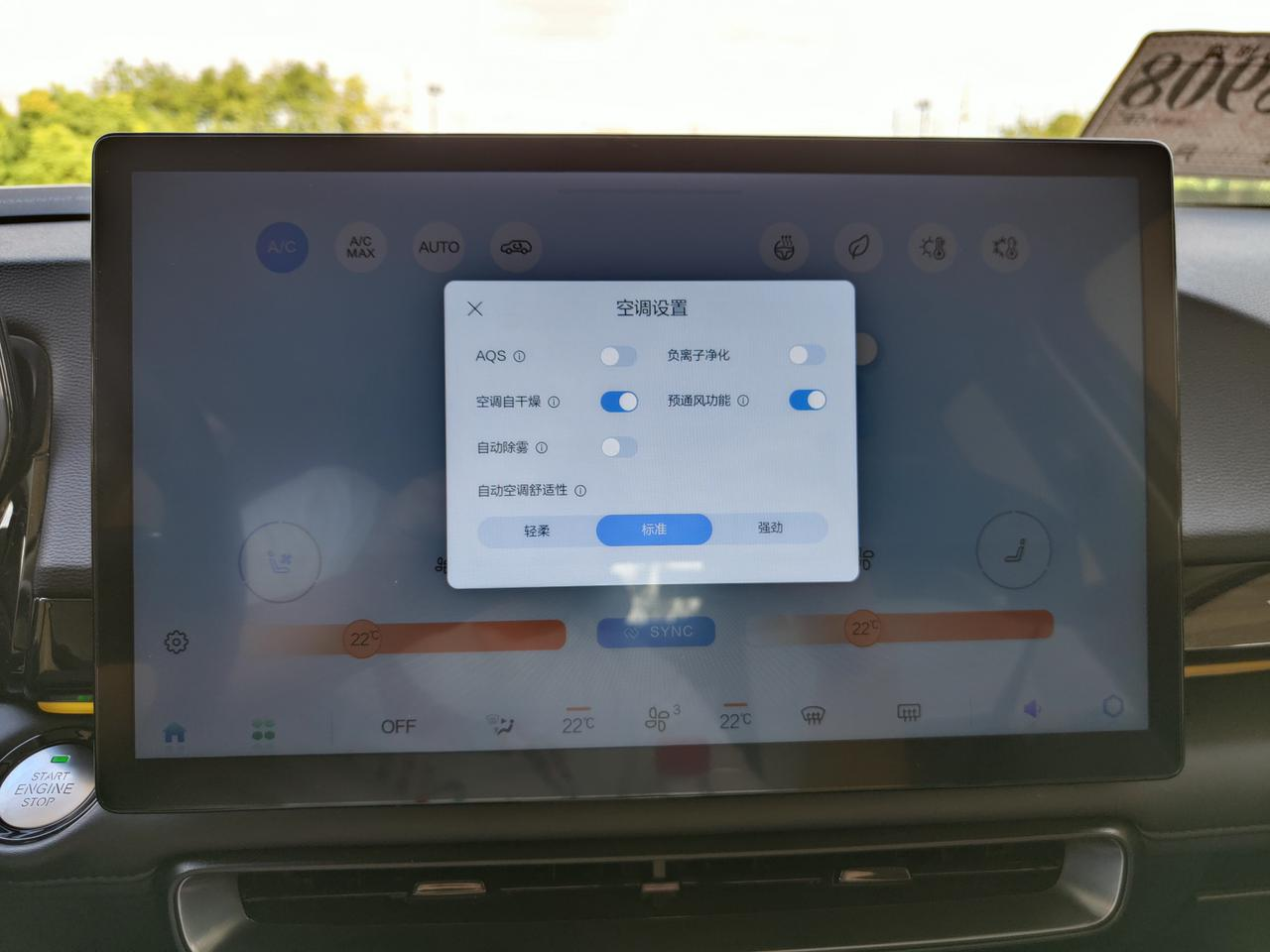
Thanks to the HarmonyOS, the car console has already incorporated a lot of commonly-used apps, and other software can be downloaded and installed via the pre-installed Huawei app store.
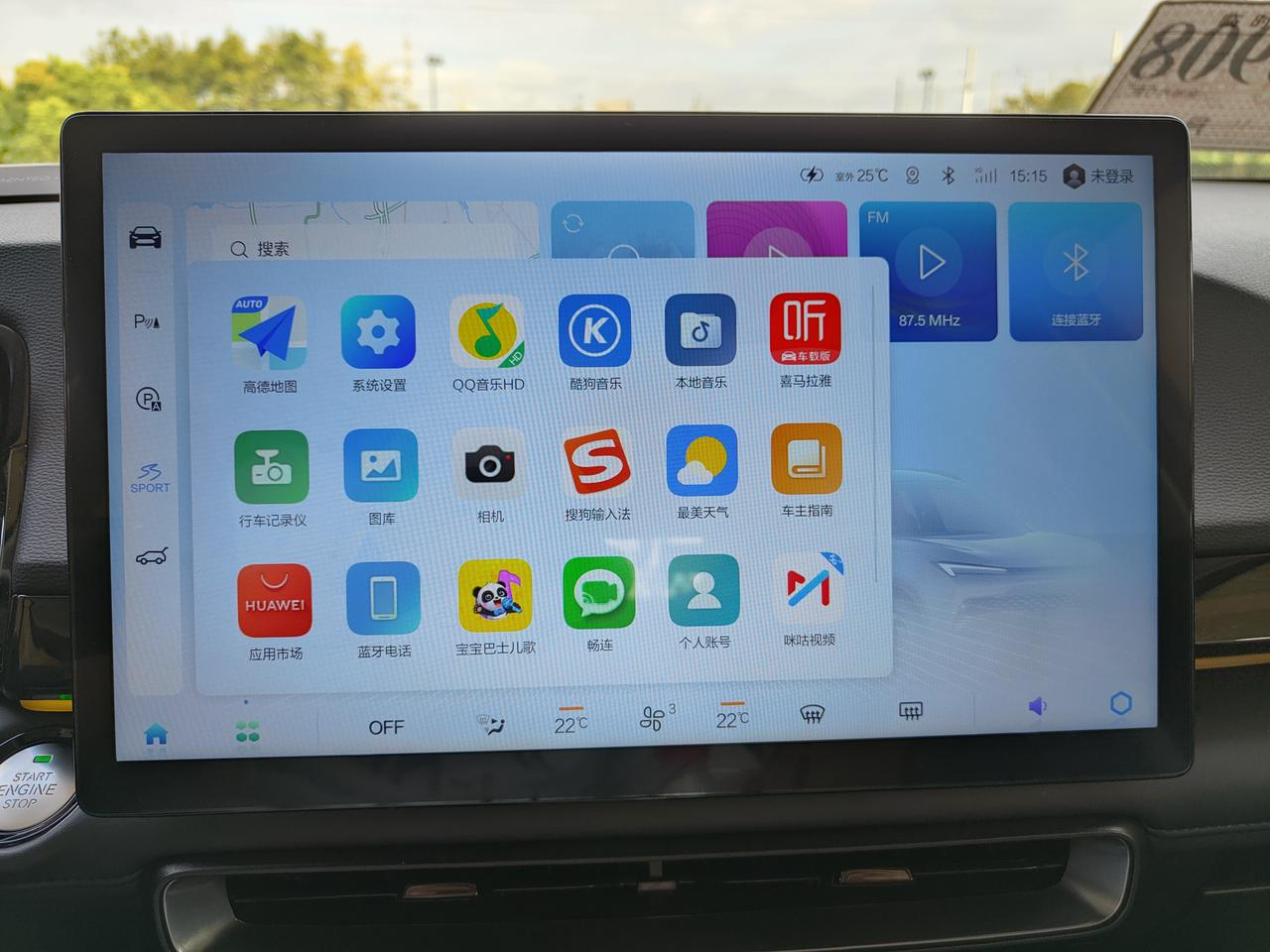
Lastly, I took a brief look at the car’s body imaging function, which is indeed quite impressive for this price range. Given the characteristic high driving position of SUVs, the 360-degree imaging also supports the wheel angle view.
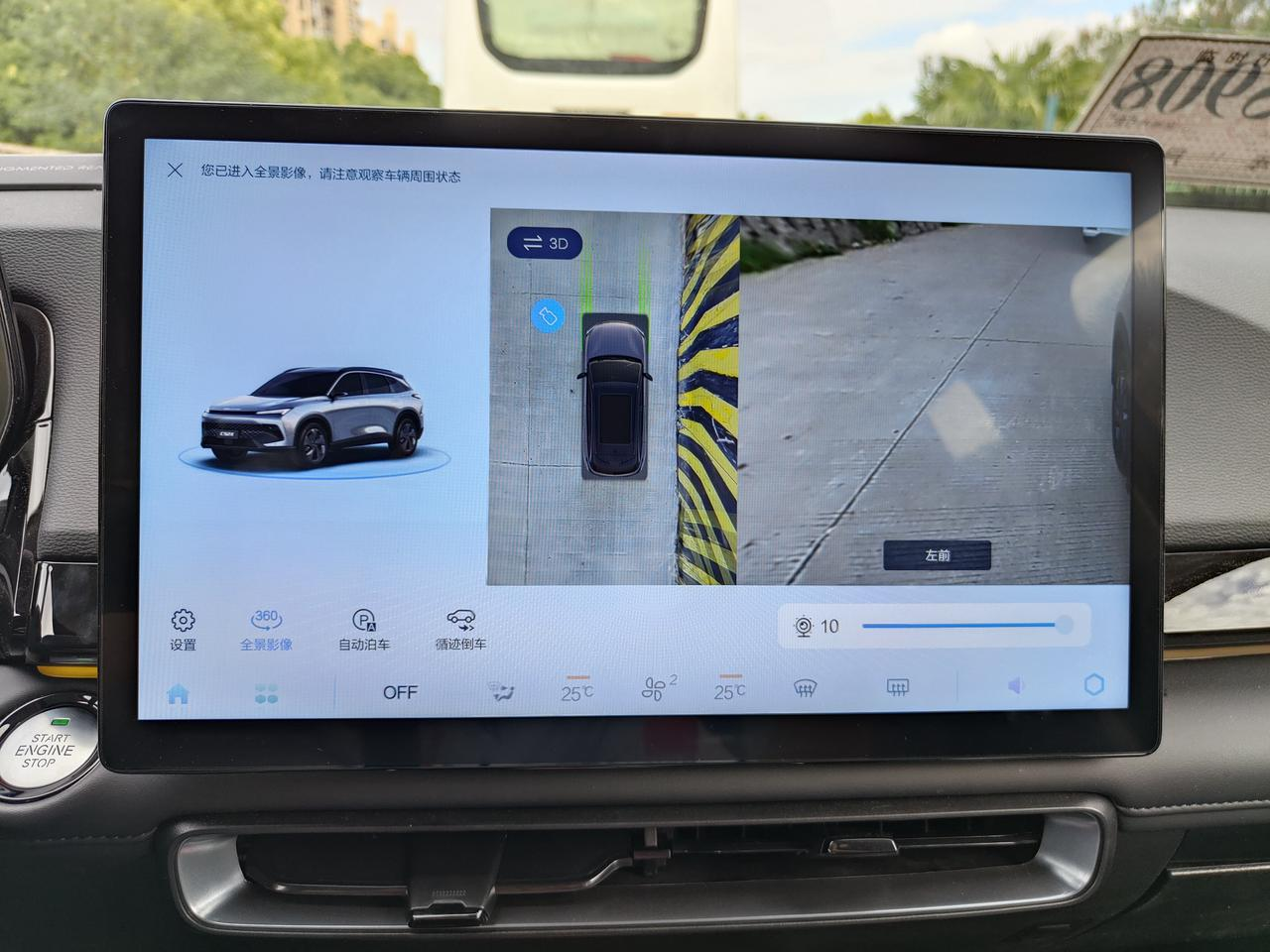
When you access the settings menu, you can see that there are plenty of functions, and in addition to transparent underbody and moving-object alarms, it also supports the automatic activation of blind-spot camera imaging when turning, and you should know that this function is not even available in my own car which costs over two hundred thousand yuan.
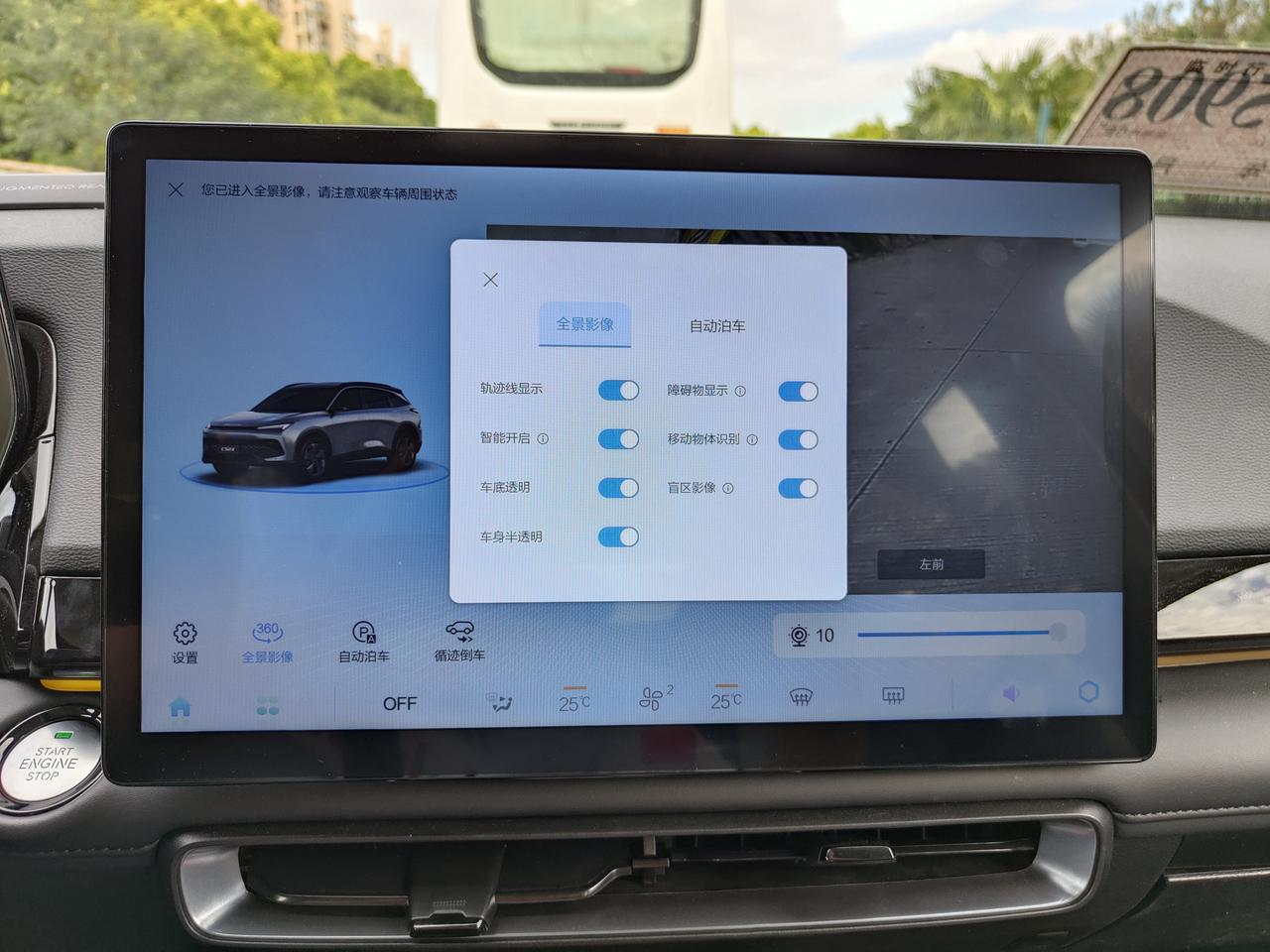
As for remote parking, there are several options available for users to set up.
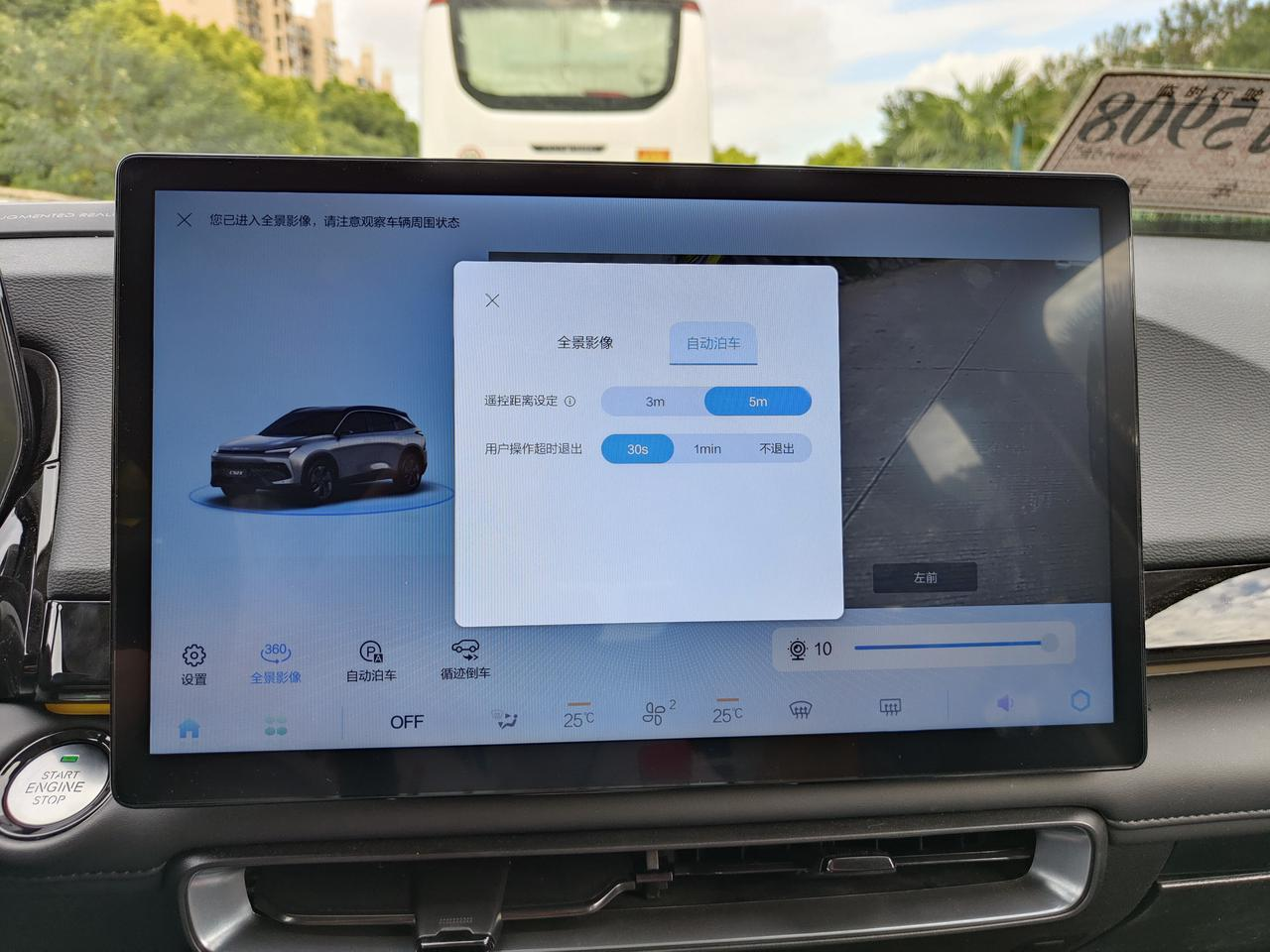
Now, I have introduced all the functions of the car console, and it can be said that this HarmonyOS car console brings an absolutely top-notch experience in the same price range.
Test Drive Impression
To be honest, the last time I drove a fuel car was in 2020; after that, I’ve only driven new energy vehicles. Luckily, I’ve been driving a Ford Mustang Mach-E to and from work recently which is a very “fuel-like” electric car, so when I got in, I at least knew how to start the engine.
Starting the engine, the unfamiliar engine shake followed. Putting it in D, stepping on the pedal deeply, the engine roar gave me a completely different feeling compared to an electric car.
However, the turbo lag at low speeds made me very uncomfortable, after all, electric vehicles can have powerful acceleration at the moment you press the pedal, while fuel cars need to wait for the engine speed to rise.
Fortunately, the vehicle’s acceleration response at medium to high speeds is significantly faster, and coupled with its 4.6-meter-plus length, it’s very agile for lane changes and steering. This 1.5T engine, with a maximum power of 138KW and a maximum torque of 305N·m, has more than enough power for urban commuting.## Conclusion
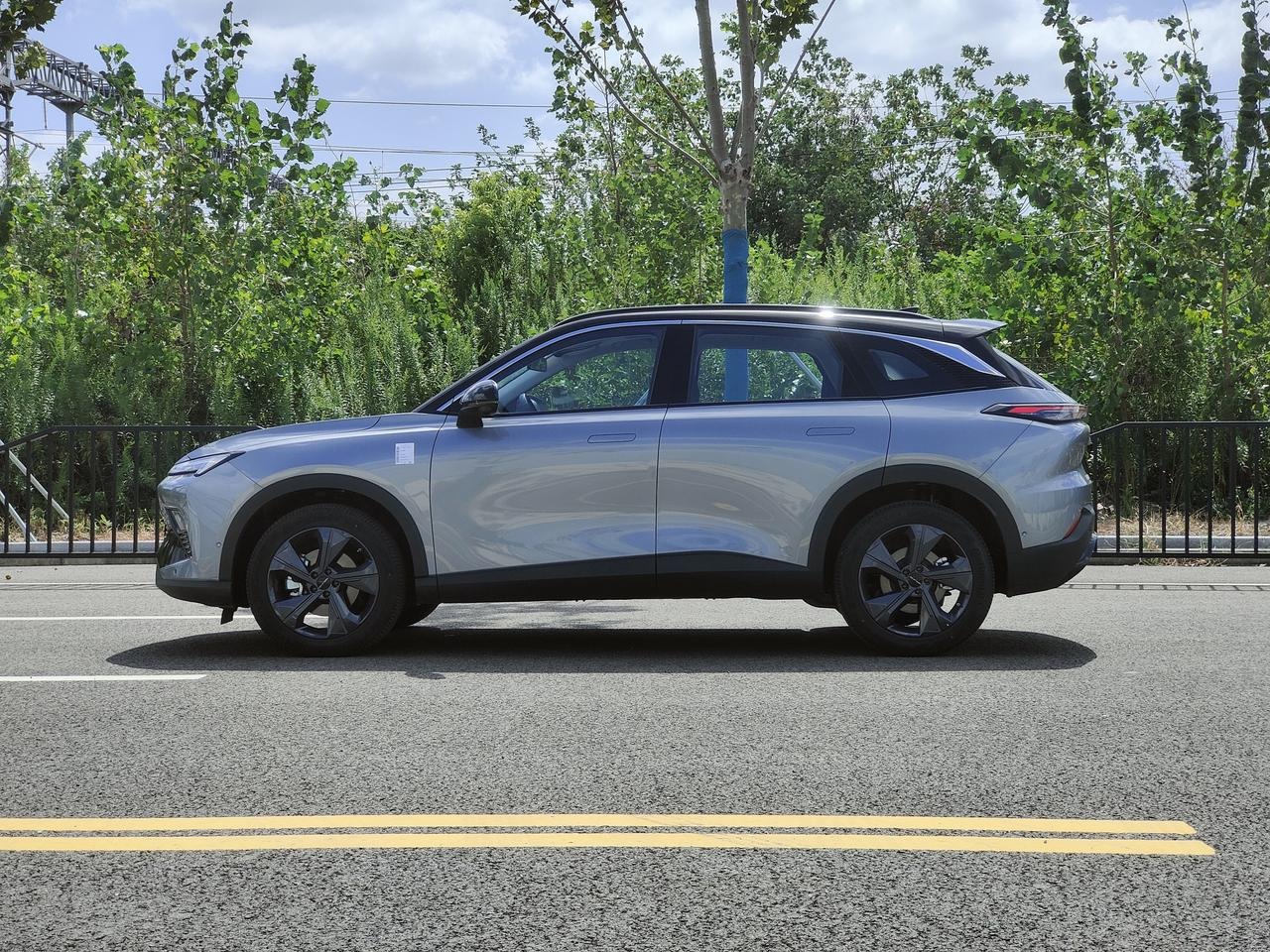
In the past, when it came to fuel cars priced below 150,000 RMB (approximately $23,294 USD), people did not have high expectations for their infotainment systems. Voices such as “It’s fine as long as it can play the radio” and “It’s fine as long as it can connect to Bluetooth for music and calls” could be heard everywhere. Due to slow navigation response and laggy operation, most drivers of these cars may buy a mobile phone holder to use mobile navigation.
But now, Beiqi Magic Cube, with its HarmonyOS-based infotainment system, tells us that low-priced fuel cars may not necessarily have a bad infotainment system. With the support of HarmonyOS, this car is superior in terms of functionality and customization to many models with the same or higher price.
Huawei once said that its vision is to “help automakers build good cars without building cars”. It seems that this “building good cars” will start with “building good infotainment systems”.
This article is a translation by ChatGPT of a Chinese report from 42HOW. If you have any questions about it, please email bd@42how.com.
